
Entretien avec Robert Steuckers sur la « révolution conservatrice » allemande
Propos recueillis par Rémi Tremblay pour le magazine canadien "Le Harfang" (Québec)
Vous placez la genèse de la Révolution conservatrice allemande au
XIXème siècle. Qui en furent les précurseurs et à quelles idées se
ralliaient-ils ?
 En effet, il me paraît très important de replacer la révolution conservatrice allemande dans un contexte temporel plus vaste et plus profond, comme d’ailleurs Armin Mohler lui-même l’avait envisagé, suite à la publication des travaux de Zeev Sternhell sur la droite révolutionnaire française d’après 1870, qui représente une réaction musclée, une volonté de redresser la nation vaincue : après la défaite de 1918 et le Traité de Versailles de juin 1919, c’est ce modèle français qu’évoquait explicitement l’Alsacien Eduard Stadtler, un ultra-nationaliste allemand, bilingue, issu du Zentrum démocrate-chrétien, fondateur du Stahlhelm paramilitaire et compagnon de Moeller van den Bruck dans son combat métapolitique de 1918 à 1925. L’Allemagne devait susciter en son sein l’émergence d’un réseau de cercles intellectuels et politiques, d’associations diverses, de sociétés de pensée et de groupes paramilitaires pour redonner au Reich vaincu un statut de pleine souveraineté sur la scène européenne et internationale.
En effet, il me paraît très important de replacer la révolution conservatrice allemande dans un contexte temporel plus vaste et plus profond, comme d’ailleurs Armin Mohler lui-même l’avait envisagé, suite à la publication des travaux de Zeev Sternhell sur la droite révolutionnaire française d’après 1870, qui représente une réaction musclée, une volonté de redresser la nation vaincue : après la défaite de 1918 et le Traité de Versailles de juin 1919, c’est ce modèle français qu’évoquait explicitement l’Alsacien Eduard Stadtler, un ultra-nationaliste allemand, bilingue, issu du Zentrum démocrate-chrétien, fondateur du Stahlhelm paramilitaire et compagnon de Moeller van den Bruck dans son combat métapolitique de 1918 à 1925. L’Allemagne devait susciter en son sein l’émergence d’un réseau de cercles intellectuels et politiques, d’associations diverses, de sociétés de pensée et de groupes paramilitaires pour redonner au Reich vaincu un statut de pleine souveraineté sur la scène européenne et internationale.
Mohler étudie la révolution conservatrice pour la seule période qui va de la défaite allemande de 1918 à l’année 1932, celle qui précède l’accession d’Hitler au pouvoir. Cette révolution conservatrice n’est pourtant pas envisageable intellectuellement si l’on fait abstraction du 19ème siècle allemand, de la postérité des « autres Lumières » de Herder, de l’inflexion vers le religieux et l’organique qu’impulse la philosophie de Schelling, des démarches philologiques explorant lettres et passés nationaux des peuples, perçus comme entités vivantes, auxquelles il serait navrant et criminel d’imposer des abstractions, a fortiori si elles sont étrangères. Nul mieux que le Britannique Peter Watson, dans son épais volume consacré au « German Genius », n’a su démontrer, récemment, que les démarches philosophiques, scientifiques, musicales, artistiques allemandes ont constitué une « troisième renaissance » européenne, après les renaissances carolingienne et italienne. Avant lui, le professeur strasbourgeois Georges Gusdorf, dans ses volumes sur la pensée romantique, expliquait, sans jargon, quel avait été l’apport des pensées allemandes avant 1850 : cet apport était organique, était l’avènement d’une pensée organique hostile aux mécanicismes et aux constructivismes simplistes, dont ceux des vulgates édulcorées et répétitives, issues des idéologèmes de la révolution française. Dilthey va systématiser ultérieurement, sur les plans philosophique et sociologique, l’herméneutique du Verstehen, mode d’appréhension du réel non matériel, propre aux forces et instances vivantes qui animent les communautés humaines. La lecture des volumes de Gusdorf sur le romantisme allemand est un must pour tout francophone qui veut entrer dans le vif du sujet.
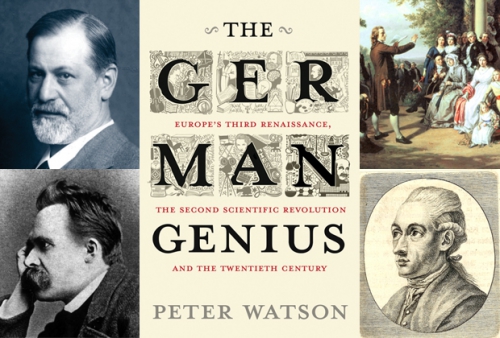
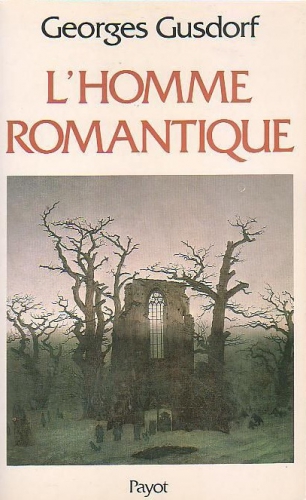 A la fin du siècle, l’Europe, par le truchement de ces « sciences allemandes », dispose d’une masse de connaissances en tous domaines qui dépassent les petits mondes étriqués des politiques politiciennes, des rabâchages de la caste des juristes, des calculs mesquins du monde économique. Rien n’a changé sur ce plan. Quant à la révolution conservatrice proprement dite, qui veut débarrasser les sociétés européennes de toutes ces scories accumulées par avocats et financiers, politicards et spéculateurs, prêtres sans mystique et bourgeois égoïstes, elle démarre essentiellement par l’initiative que prend en 1896 l’éditeur Eugen Diederichs. Il cultivait l’ambition de proposer à la lecture et à la réflexion une formidable batterie d’idées innovantes capables, à terme, de modeler une société nouvelle, enclenchant de la sorte une révolution véritable qui ne suggère aucune table rase mais au contraire entend ré-enchanter les racines, étouffées sous les scories des conformismes. La même année, le jeune romantique Karl Fischer fonde le mouvement des Wandervögel, dont l’objectif est d’arracher la jeunesse à tous les conformismes et aussi de la sortir des sinistres quartiers surpeuplés des villes devenues tentaculaires suite à la révolution industrielle. Eugen Diederichs veut un socialisme non matérialiste, une religion nouvelle puisant dans la mémoire du peuple et renouant avec les mystiques médiévales (Maître Eckhart, Ruusbroec, Nicolas de Cues, etc.), une libéralisation sexuelle, un néo-romantisme inspiré par des sources allemandes, russes, flamandes ou scandinaves.
A la fin du siècle, l’Europe, par le truchement de ces « sciences allemandes », dispose d’une masse de connaissances en tous domaines qui dépassent les petits mondes étriqués des politiques politiciennes, des rabâchages de la caste des juristes, des calculs mesquins du monde économique. Rien n’a changé sur ce plan. Quant à la révolution conservatrice proprement dite, qui veut débarrasser les sociétés européennes de toutes ces scories accumulées par avocats et financiers, politicards et spéculateurs, prêtres sans mystique et bourgeois égoïstes, elle démarre essentiellement par l’initiative que prend en 1896 l’éditeur Eugen Diederichs. Il cultivait l’ambition de proposer à la lecture et à la réflexion une formidable batterie d’idées innovantes capables, à terme, de modeler une société nouvelle, enclenchant de la sorte une révolution véritable qui ne suggère aucune table rase mais au contraire entend ré-enchanter les racines, étouffées sous les scories des conformismes. La même année, le jeune romantique Karl Fischer fonde le mouvement des Wandervögel, dont l’objectif est d’arracher la jeunesse à tous les conformismes et aussi de la sortir des sinistres quartiers surpeuplés des villes devenues tentaculaires suite à la révolution industrielle. Eugen Diederichs veut un socialisme non matérialiste, une religion nouvelle puisant dans la mémoire du peuple et renouant avec les mystiques médiévales (Maître Eckhart, Ruusbroec, Nicolas de Cues, etc.), une libéralisation sexuelle, un néo-romantisme inspiré par des sources allemandes, russes, flamandes ou scandinaves.
Ces idées sont propulsées dans le paysage intellectuel allemand par une politique éditoriale moderne et dynamique qui propose à la réflexion du plus grand nombre possible, sur un mode équilibré, serein et doux, toutes ces idées jusqu’en 1914. La première guerre mondiale va ruiner ces projets de rénovation tout à la fois révolutionnaire et conservatrice des sociétés européennes. C’est bel et bien la fin de la « Belle Epoque ». Socialistes, anarchisants, lecteurs des productions de Diederichs, Wandervögel, néoromantiques germanisants, « médiévisants » mystiques, nietzschéens de toutes moutures, artistes avant-gardistes avaient rêvé calmement de transformer nos sociétés en un monde plus juste, plus enraciné dans son passé idéalisé, plus religieux, plus esthétique. La guerre ruine la possibilité d’accéder à ce monde nouveau par le biais d’une transition douce, laquelle, il faut l’avouer, par manque de rudesse, risquait de bien vite s’enliser en un magma sans levain ou en des parodies parfois bouffonnes. Un grand nombre d’idéalistes mystiques, germanisants, nietzschéens vont alors penser, entre autres avec les futuristes italiens, que la guerre constituera une hygiène, favorisera une sorte de grande lessive qui, après des carnages que l’on imaginait héroïques et chevaleresques, permettrait enfin l’avènement de ce « règne de l’esprit » (envisagé par Merejkovski et Moeller van den Bruck).
Au lendemain de la défaite, les Allemands se rendent compte qu’ils ne sont plus considérés dans le monde comme les porteurs de cette « troisième renaissance européenne », dont les composantes, pourtant sublimes, ont été décrites comme les expressions d’une barbarie intrinsèque par les propagandes alliées. Balayé par les horreurs de la guerre, l’idéalisme d’avant 1914 subit une transformation après la défaite : plus tragique, plus âpre aussi, il accentuera son nietzschéisme, non plus en se référant au nietzschéisme des artistes (moqué par les droites et adulé par les sociaux-démocrates avant la Grande Guerre) mais à un Nietzsche plus « démasqueur », plus incisif et offensif. Le communisme bolchevique est désormais un facteur avec lequel il faut compter ; la radicalité communiste n’est plus marginale et intérieure, elle a désormais pour instrument une grande puissance politique aux dimensions impériales. Les mécontents, qui n’admettent pas la défaite ni les capitulations qu’elle implique, prennent des positions ambivalentes : ils posent le communisme comme inacceptable à l’intérieur du Reich mais la nouvelle Union Soviétique de Lénine comme un allié potentiel contre un Occident qui impose des réparations impossibles à satisfaire.
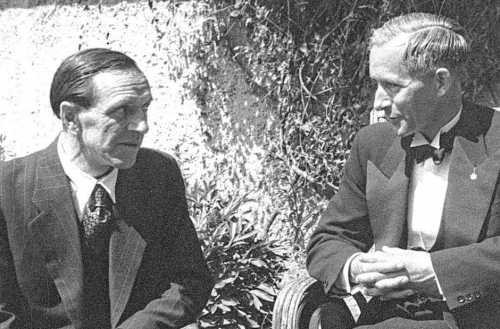
Les penseurs les plus audacieux, en l’occurrence Ernst et Friedrich-Georg Jünger, élaborent un « nationalisme révolutionnaire », soit un radicalisme forcené à connotations communisantes et collectivistes, doublé de l’affirmation d’un nationalisme porté par une phalange inébranlable de combattants politiques soudés, par des liens de camaraderie extrêmement forts, comme l’étaient les Stosstruppen, les troupes d’assaut, lors de la Grande Guerre. Les frères Jünger, leurs homologues au sein du « nationalisme soldatique » comme Franz Schauwecker ou Werner Beumelburg, le penseur Friedrich Hielscher, etc. caresseront l’espoir de voir se déclencher un putsch militaire (par Corps Francs interposés, comme la phalange orchestrée par le Capitaine Ehrhardt) qui porterait au pouvoir une élite de combattants issus des Stosstruppen. Cette élite aurait eu pour tâche historique de créer un système politique radicalement différent des héritages politiciens du 19ème , de l’époque de Guillaume II et de la nouvelle République de Weimar, de la démocratie occidentale et de ses dérives rationalistes ou ploutocratiques (France, Angleterre), tout en dépassant la radicalité bolchevique russe et en renouant avec la fougue iconoclaste d’un Marinetti ou avec les projets audacieux et grandioses des architectes futuristes, avec les fureurs d’un Léon Bloy fustigeant les dévots au nom d’une foi incandescente, non pas au nom d’un voltairisme réactualisé mais d’un feu intérieur mystique qui n’accepte pas que le religieux s’enlise dans un conformisme quelconque, dans un pharisaïsme sec et ridicule.
Les traités de Locarno et de Berlin ramènent un espoir de paix en Europe qui isole les partisans de cette révolution incandescente des combattants, des futuristes, des bolcheviques non matérialistes et des mystiques enflammés. Locarno et Berlin sonnent le glas des idéalismes révolutionnaires : à ceux-ci, que l’ouvrage Le Travailleur d’Ernst Jünger illustre pleinement, succèdera un néonationalisme plus apte à s’inscrire dans les luttes politiques balisées par les institutions de la République de Weimar.

Les projets politiques audacieux le resteront mais s’exprimeront par un langage plus « scientifique » : les idées de Rathenau d’un tandem politico-économique germano-soviétique -un Rathenau pourtant assassiné par des anciens des « Corps Francs »- et celles d’une revue pionnière comme Die Tat, flanquées des théories géopolitiques exprimées dans la revue du Général Haushofer (Zeitschrift für Geopolitik) vont créer un corpus qui stabilisera d’abord Weimar sur la scène internationale, innervera les politiques de grands travaux infrastructurels du Troisième Reich puis celle de la CEE et de l’UE (jusqu’à ce que celle-ci soit totalement neutralisée par les élucubrations néolibérales) mais sans donner à l’Allemagne une géopolitique cohérente, en dépit de la qualité des travaux de Haushofer et de ses équipes de géopolitologues chevronnés.
Dans cette optique d’une politique de développement national et/ou européen autarcique, la référence reste l’économiste Friedrich List, inspirateur au 19ème du développement ferroviaire de l’Allemagne, de la politique de colonisation intérieure en France et aux Etats-Unis et, surtout, des politiques chinoises de développement autocentré et eurasiatique actuelle, du Kuo Mintang à nos jours, en passant par le réformateur Deng Xiaoping qui a réussi à dépasser la phase de la stagnation maoïste. List, à l’origine des idées hétérodoxes de l’école historique allemande du 19ème siècle, est plus actuel et plus efficace que jamais, quand on observe les formidables projets ferroviaires eurasiens ébauchés par la Chine d’aujourd’hui. Preuve que réfléchir aux idées considérées à tort ou à raison comme « révolutionnaires-conservatrices » n’est pas un anachronisme de penseur en chambre mais une option politique et impériale valable éternellement, prouvant, par là-même, qu’une entité continentale comme l’UE ou comme tout autre grand-espace civilisationnel, qui ne s’inscrit pas dans la dynamique inaugurée par List est condamné à la stagnation et à l’implosion. L’Europe implosée d’aujourd’hui en est la preuve emblématique.
Le terme Révolution conservatrice englobe de nombreux penseurs et
écrivains qui s’unissent notamment par un rejet de la démocratie
libérale. Quel genre de modèles ou de sociétés prônait-on ? Quelle
ligne directrice unissait tous les courants de la Révolution
conservatrice ?
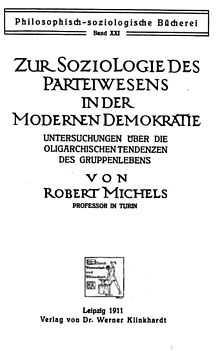 Il faut se rappeler que le rejet le mieux charpenté de la démocratie libérale et surtout de ses dérives partitocratiques ne provient pas d’un mouvement ou cénacle émanant d’une droite posée comme « conservatrice-révolutionnaire » mais d’une haute figure de la social-démocratie allemande et européenne, Roberto Michels, actif en Belgique, en Allemagne et en Italie avant 1914. Ici aussi, je ne fais pas d’anachronisme : à l’université en 1974, on nous conseillait la lecture de sa critique des oligarchies politiciennes (sociaux-démocrates compris) ; après une éclipse navrante de quelques décennies, je constate avec bonheur qu’une grande maison française, Gallimard-Folio, vient de rééditer sa Sociologie du parti dans la démocratie moderne (Zur Soziologie des Parteiwesens), qui démontre avec une clarté inégalée les dérives dangereuses d’une démocratie partitocratique : coupure avec la base, oligarchisation, règne des « bonzes », compromis contraires aux promesses électorales et aux programmes, bref, les maux que tous sont bien contraints de constater aujourd’hui en Europe et ailleurs, en plus amplifiés ! Michels suggère des correctifs : référendum (démocratie directe), renonciation (aux modes de vie matérialistes et bourgeois, ascétisme de l’élite politique se voulant alternative), etc. Dans cet ouvrage fondamental des sciences politiques, Michels vise à dépasser tout ce qui fait le ronron d’un parti (et, partant, d’une vie politique nationale orchestrée autour du jeu répétitif des élections récurrentes d’un certain nombre de partis établis) et suggère des pistes pour échapper à ces enlisements ; elles annoncent les aspirations ultérieures des conservateurs-révolutionnaires (ou assimilés) d’après 1918 et surtout d’après Locarno, sans oublier les futurs non-conformistes français des années 30 et ceux qui, aujourd’hui, cherchent à sortir des impasses où nous ont fourvoyés les établis. Ces pistes insistent sur la nécessité d’avoir des élites politiques ascétiques, sur une virulence correctrice que Michels croyait déceler dans le syndicalisme révolutionnaire (et ses versions italiennes comme celles activées par Filippo Corridoni avant 1914 – Corridoni tombera au front en 1915), dans les idées activistes de Georges Sorel et dans certaines formes d’anarchisme hostiles aux hiérarchies figées. L’idée-clef est de traquer partout, dans les formes de représentation politique, les éléments négatifs qui figent, qui induisent des répétitions lesquelles annulent l’effervescence révolutionnaire ou la dynamique douce/naturelle du peuple, oblitèrent la spontanéité des masses (on y reviendra en mai 68 !). En ce sens, les idées de Michels, Corridoni et Sorel entendent conserver les potentialités vivantes du peuple qui, le cas échéant et quand nécessité fait loi, sont capables de faire éclore un mouvement révolutionnaire correcteur et éradicateur des fixismes répétitifs.
Il faut se rappeler que le rejet le mieux charpenté de la démocratie libérale et surtout de ses dérives partitocratiques ne provient pas d’un mouvement ou cénacle émanant d’une droite posée comme « conservatrice-révolutionnaire » mais d’une haute figure de la social-démocratie allemande et européenne, Roberto Michels, actif en Belgique, en Allemagne et en Italie avant 1914. Ici aussi, je ne fais pas d’anachronisme : à l’université en 1974, on nous conseillait la lecture de sa critique des oligarchies politiciennes (sociaux-démocrates compris) ; après une éclipse navrante de quelques décennies, je constate avec bonheur qu’une grande maison française, Gallimard-Folio, vient de rééditer sa Sociologie du parti dans la démocratie moderne (Zur Soziologie des Parteiwesens), qui démontre avec une clarté inégalée les dérives dangereuses d’une démocratie partitocratique : coupure avec la base, oligarchisation, règne des « bonzes », compromis contraires aux promesses électorales et aux programmes, bref, les maux que tous sont bien contraints de constater aujourd’hui en Europe et ailleurs, en plus amplifiés ! Michels suggère des correctifs : référendum (démocratie directe), renonciation (aux modes de vie matérialistes et bourgeois, ascétisme de l’élite politique se voulant alternative), etc. Dans cet ouvrage fondamental des sciences politiques, Michels vise à dépasser tout ce qui fait le ronron d’un parti (et, partant, d’une vie politique nationale orchestrée autour du jeu répétitif des élections récurrentes d’un certain nombre de partis établis) et suggère des pistes pour échapper à ces enlisements ; elles annoncent les aspirations ultérieures des conservateurs-révolutionnaires (ou assimilés) d’après 1918 et surtout d’après Locarno, sans oublier les futurs non-conformistes français des années 30 et ceux qui, aujourd’hui, cherchent à sortir des impasses où nous ont fourvoyés les établis. Ces pistes insistent sur la nécessité d’avoir des élites politiques ascétiques, sur une virulence correctrice que Michels croyait déceler dans le syndicalisme révolutionnaire (et ses versions italiennes comme celles activées par Filippo Corridoni avant 1914 – Corridoni tombera au front en 1915), dans les idées activistes de Georges Sorel et dans certaines formes d’anarchisme hostiles aux hiérarchies figées. L’idée-clef est de traquer partout, dans les formes de représentation politique, les éléments négatifs qui figent, qui induisent des répétitions lesquelles annulent l’effervescence révolutionnaire ou la dynamique douce/naturelle du peuple, oblitèrent la spontanéité des masses (on y reviendra en mai 68 !). En ce sens, les idées de Michels, Corridoni et Sorel entendent conserver les potentialités vivantes du peuple qui, le cas échéant et quand nécessité fait loi, sont capables de faire éclore un mouvement révolutionnaire correcteur et éradicateur des fixismes répétitifs.
La social-démocratie, en laquelle s’inscrivait Michels (avant de suivre son camarade socialiste italien Mussolini), ne se réclamait pas tant de Marx et des marxistes (c’est-à-dire de ceux qui se sont ingéniés à figer Marx, ce qui les distingue des « marxiens » comme un Werner Sombart, par exemple, ou des marxo-listiens à la Deng Xiaoping, auquel je pourrais personnellement m’identifier…). Elle était surtout inspirée par Schopenhauer et par Nietzsche comme l’ont démontré plusieurs chercheurs britanniques ou américains. Or l’essence du nietzschéisme, c’est d’induire une rétivité permanente à l’endroit de ce qui se rigidifie, se pétrifie. Il faut créer, façonner du nouveau sur base de matériaux immémoriaux, toujours prêts à accepter de nouvelles jouvences mais ne jamais conserver ce qui a perdu tout souffle et toute vitalité. On détruit le vermoulu à coups de marteau pour remettre en place des créations vivantes ou raviver des sources pérennes. On conserve donc les sources pérennes mais on détruit révolutionnairement ce qu’elles n’irriguent plus. Avant 1914, les sociaux-démocrates, non encore « marxistes » (au sens polémique du terme), veulent une société rajeunie par les idées de Nietzsche et prônant la justice sociale, assortie d’un élargissement maximal de la citoyenneté pleine et entière (suffrage universel pour clore l’ère bourgeoise et injecter du neuf dans la Cité, ce qui sera, bien entendu, une amère illusion…).
La première guerre mondiale balaie cette vision idéaliste et un peu naïve du fonctionnement d’une société en phase de mutation politique et/ou révolutionnaire. La guerre européenne restaure des hiérarchies de type militaire. Et soude les hommes au-delà des classes sociales d’avant-guerre, efface bon nombre de distinctions divisantes. Ce qui, à la fin des hostilités, a pour corollaire un rejet du monde civil jugé inessentiel, fade, désuet, comme l’attestent les écrits des Jünger, Schauwecker ou autre Hugo Fischer. Le modèle est toujours agonal, bien évidemment, mais la communauté populaire, la vraie, n’est plus unie autour de paisibles revendications politiques ou socio-économiques, c’est-à-dire matérielles voire matérialistes, mais elle est soudée par le combat révolutionnaire, poursuite du combat pur livré sous les « orages d’acier », expurgé de toutes les naïvetés propres aux belles âmes d’avant-guerre. Ceux qui ont porté le combat pur sont aussi ceux qui donneront le coup fatal à l’édifice weimarien posé comme vermoulu ou incapable de transmettre un feu mystique et révolutionnaire, selon l’adage nietzschéen : « Was fällt, soll man nog stossen » (Ce qui est ébranlé, il faut le jeter bas !).
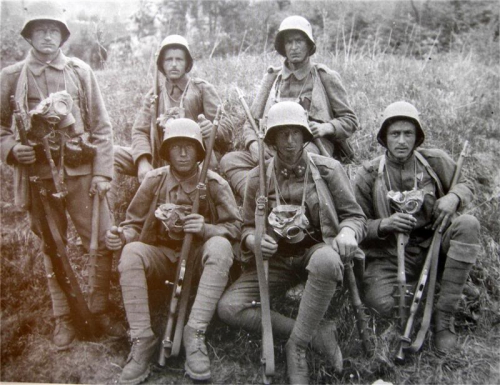
L’alternative à la démocratie libérale de Weimar, chez les maximalistes du nationalisme soldatique, est donc une « milice » politique et futuriste qui se passe des mécanismes électoraux conventionnels et s’inspire, en fin de compte, de l’expérience de Gabriele d’Annunzio à Fiume en 1919-1921, sans pour autant retenir les dimensions franchement anarchistes de cette expérience italienne. Sorel, les bolcheviques et Fiume représentent des alternatives dont on peut combiner les éléments à l’infini. Chez les Allemands, contrairement aux Italiens qui se posent depuis l’interventionnisme de 1915 comme germanophobes pour qui tous les archaïsmes sont germaniques, les scories inutiles sont celles de l’Occident français et britanniques, surtout quand il s’exprime en des termes rationalistes caricaturaux tels ceux prisés par le personnage Settembrini dans le roman La Montagne magique de Thomas Mann (anti-occidentaliste entre 1914 et la fin des années 20).
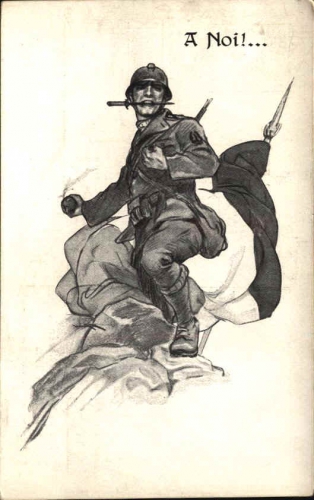 Reste aussi un autre problème que l’époque et ses avant-gardes politiques et littéraires ont tenté de résoudre dans la pétulance et l’intempérance : celui de la vitesse. Chez les futuristes, c’est clair, surtout dans certaines de leurs plus belles œuvres picturales, la vitesse est l’ivresse du monde, le mode exaltant qui, maîtrisé ou chevauché, permet d’échapper justement aux fixismes, au « passatismo ». A gauche aussi, la révolution a pour but de réaliser vite les aspirations populaires. Le prolétariat révolutionnaire des bolcheviques, une fois au pouvoir, maîtrise les machines et les rapidités qu’elles procurent. Le conseillisme bavarois, quant à lui, ne souhaitait pas effacer les spontanéités vitales de la population. Le fascisme de Mussolini, venu du socialisme et du syndicalisme sorélien et corrodinien, ne l’oublions jamais, entend réaliser en six heures ce que la démocratie parlementaire et palabrante (et donc lente, hyper-lente) fait en six ans. Les réactionnaires, que les futuristes ou les bolcheviques jugeront « passéistes », rappelaient que la prise de décision du monarque ou du petit nombre dans les anciens régimes était plus rapide que celle des parlements (d’où la présence récurrente de figures de la contre-révolution française dans les démarches intellectuelles d’Ernst Jünger, fussent-elles les plus maximalistes avant 1925). Un système politique cohérent, pour les avant-gardes des années 20, doit donc pouvoir décider rapidement, à la vitesse des nouvelles machines, des bolides Bugatti ou Mercedes, des avions des pionniers de l’air, des vedettes rapides des nouvelles forces navales (d’Annunzio). Une force politique nouvelle, démocratique ou non (Fiume est une démocratie avant-gardiste !), doit être décisionnaire et rapide, donc jeune. Si elle est parlementaire et palabrante, elle est lente donc vieille et cette sénilité pétrifiée mérite d’être jetée bas. La double idée de décision et de rapidité d’exécution est évidemment présente dans le nationalisme soldatique et explique pourquoi le coup de force est considéré comme plus efficace et plus propre que les palabres parlementaires. Elle apparait ensuite dans la théorie politique plus élaborée et plus juridique de Carl Schmitt, qui rejette le normativisme (comme étant un système de règles figées finalement incapacitantes quand le danger guette la Cité, où la « lex », par sa lourde présence, sape l’action du « rex ») et le positivisme juridique, trop technique et inattentif aux valeurs pérennes. Schmitt, décisionniste, prône évidemment le décisionnisme, dont il est le représentant le plus emblématique, et insiste sur la nécessité permanente d’agir au sein d’ordres concrets, réellement existants, hérités, légués par l’histoire et les traditions politiques de la Cité (ce qui implique le rejet de toute volonté de créer un « Etat mondial »).
Reste aussi un autre problème que l’époque et ses avant-gardes politiques et littéraires ont tenté de résoudre dans la pétulance et l’intempérance : celui de la vitesse. Chez les futuristes, c’est clair, surtout dans certaines de leurs plus belles œuvres picturales, la vitesse est l’ivresse du monde, le mode exaltant qui, maîtrisé ou chevauché, permet d’échapper justement aux fixismes, au « passatismo ». A gauche aussi, la révolution a pour but de réaliser vite les aspirations populaires. Le prolétariat révolutionnaire des bolcheviques, une fois au pouvoir, maîtrise les machines et les rapidités qu’elles procurent. Le conseillisme bavarois, quant à lui, ne souhaitait pas effacer les spontanéités vitales de la population. Le fascisme de Mussolini, venu du socialisme et du syndicalisme sorélien et corrodinien, ne l’oublions jamais, entend réaliser en six heures ce que la démocratie parlementaire et palabrante (et donc lente, hyper-lente) fait en six ans. Les réactionnaires, que les futuristes ou les bolcheviques jugeront « passéistes », rappelaient que la prise de décision du monarque ou du petit nombre dans les anciens régimes était plus rapide que celle des parlements (d’où la présence récurrente de figures de la contre-révolution française dans les démarches intellectuelles d’Ernst Jünger, fussent-elles les plus maximalistes avant 1925). Un système politique cohérent, pour les avant-gardes des années 20, doit donc pouvoir décider rapidement, à la vitesse des nouvelles machines, des bolides Bugatti ou Mercedes, des avions des pionniers de l’air, des vedettes rapides des nouvelles forces navales (d’Annunzio). Une force politique nouvelle, démocratique ou non (Fiume est une démocratie avant-gardiste !), doit être décisionnaire et rapide, donc jeune. Si elle est parlementaire et palabrante, elle est lente donc vieille et cette sénilité pétrifiée mérite d’être jetée bas. La double idée de décision et de rapidité d’exécution est évidemment présente dans le nationalisme soldatique et explique pourquoi le coup de force est considéré comme plus efficace et plus propre que les palabres parlementaires. Elle apparait ensuite dans la théorie politique plus élaborée et plus juridique de Carl Schmitt, qui rejette le normativisme (comme étant un système de règles figées finalement incapacitantes quand le danger guette la Cité, où la « lex », par sa lourde présence, sape l’action du « rex ») et le positivisme juridique, trop technique et inattentif aux valeurs pérennes. Schmitt, décisionniste, prône évidemment le décisionnisme, dont il est le représentant le plus emblématique, et insiste sur la nécessité permanente d’agir au sein d’ordres concrets, réellement existants, hérités, légués par l’histoire et les traditions politiques de la Cité (ce qui implique le rejet de toute volonté de créer un « Etat mondial »).
Malgré le terme « conservateur », ce courant de pensée fut également
proche de l’extrême-gauche, notamment d’Ernst Niekisch. Quel fut
l’apport de Niekisch à la Révolution conservatrice et en quoi s’en
inspira-t-il ?
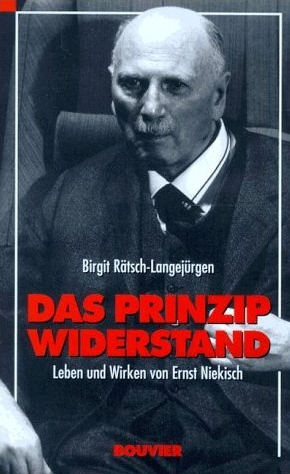 Ernst Niekisch est un révolutionnaire de gauche pur jus. Il a participé à un gouvernement des Conseils en Bavière, lesquels seront balayés par les Corps Francs de von Epp. Dans ce gouvernement, figurait également Gustav Landauer, penseur anarchiste éminemment fécond, puisant à des sources intéressantes du 19ème siècle et développant une anthropologie compénétrée de mystique. Ce premier gouvernement des Conseils, non explicitement communiste, sera renversé par les bolcheviques du KPD, provoquant chez Landauer une immense déception. Pour lui, la politique révolutionnaire bavaroise sombrait, par ce coup de force, dans les rigidités léninistes et perdait son originalité unique. Niekisch était sans nul doute plus marqué par le marxisme de la social-démocratie d’avant 1914 mais sous l’influence d’un camarade aussi subtil que Landauer, il a dû ajouter à sa formation initiale des éléments moins conventionnels, notamment plus communautaires-anarchisants (héritage de Bakounine et Kropotkine). Cet anarchisme, hostile à toute rigidité et répétition, Niekisch le couple à des idéaux paysans/ruralistes présents dans les « sources du communisme russe » (explorées par Berdiaev) ou chez Tolstoï (édité par Diederichs) et, bien entendu, chez les folcistes (Völkischen) allemands, lesquels étaient plutôt classés « à droite ». Cette mythologie nouvelle devient alors chez Niekisch un mixte de prolétarisme socialiste et de ruralisme germano-russe, saupoudré de quelques oripeaux libertaires légués par Landauer, le tout pour favoriser une révolution allemande philo-soviétique, destinée à libérer les ouvriers et les paysans d’Allemagne d’une bourgeoisie pro-occidentale qui acceptait les réparations imposées par l’Ouest lors du Traité de Versailles, au détriment de son propre peuple, et les crédits américains des Plans Young et Dawes, limitant la souveraineté nationale.
Ernst Niekisch est un révolutionnaire de gauche pur jus. Il a participé à un gouvernement des Conseils en Bavière, lesquels seront balayés par les Corps Francs de von Epp. Dans ce gouvernement, figurait également Gustav Landauer, penseur anarchiste éminemment fécond, puisant à des sources intéressantes du 19ème siècle et développant une anthropologie compénétrée de mystique. Ce premier gouvernement des Conseils, non explicitement communiste, sera renversé par les bolcheviques du KPD, provoquant chez Landauer une immense déception. Pour lui, la politique révolutionnaire bavaroise sombrait, par ce coup de force, dans les rigidités léninistes et perdait son originalité unique. Niekisch était sans nul doute plus marqué par le marxisme de la social-démocratie d’avant 1914 mais sous l’influence d’un camarade aussi subtil que Landauer, il a dû ajouter à sa formation initiale des éléments moins conventionnels, notamment plus communautaires-anarchisants (héritage de Bakounine et Kropotkine). Cet anarchisme, hostile à toute rigidité et répétition, Niekisch le couple à des idéaux paysans/ruralistes présents dans les « sources du communisme russe » (explorées par Berdiaev) ou chez Tolstoï (édité par Diederichs) et, bien entendu, chez les folcistes (Völkischen) allemands, lesquels étaient plutôt classés « à droite ». Cette mythologie nouvelle devient alors chez Niekisch un mixte de prolétarisme socialiste et de ruralisme germano-russe, saupoudré de quelques oripeaux libertaires légués par Landauer, le tout pour favoriser une révolution allemande philo-soviétique, destinée à libérer les ouvriers et les paysans d’Allemagne d’une bourgeoisie pro-occidentale qui acceptait les réparations imposées par l’Ouest lors du Traité de Versailles, au détriment de son propre peuple, et les crédits américains des Plans Young et Dawes, limitant la souveraineté nationale.
L’apport majeur de Niekisch réside dans l’édition de revues « national-bolcheviques », telles Widerstand et Entscheidung. Leurs titres sont révélateurs : Niekisch privilégie le cadre national pour organiser et installer la révolution et le régime révolutionnaire. Il nie l’internationalisme comme impraticable. Il veut une démocratie prolétarienne spontanée donc sans médiation inutile, sans la médiation de « bonzes » qui s’encroûtent et finissent par nier leur idéalisme initial, comme le voulait aussi Landauer. Mais cette démocratie prolétarienne doit produire, pour le bien de la nation, des équipes ascétiques capables de poser les bonnes décisions. Ces revues donneront aux frères Jünger l’occasion d’exprimer leurs idées politiques extrêmes et raffinées. Elles sont donc essentielles pour comprendre la genèse de leurs œuvres, toujours lues et de plus en plus abondamment commentées de nos jours. Même si les frères Jünger ont abandonné toute politique radicale pour se pencher sur les problèmes écologiques (Friedrich-Georg avec, après 1945, le revue Scheidewege, qui annonce les problématiques actuelles de la déconnexion et de la « dé-célération » ou Entschleunigung) ou, chez Ernst, sur un esthétisme très personnel, celui de l’homme détaché des manies de ses contemporains, les tentatives politiques extrêmes sont, d’une certaine façon, la première phase de leur rejet complet d’un monde bourgeois hypertechnicisé ou désenchanté, qu’ils mépriseront tous deux jusqu’à leur dernier souffle. Ernst Jünger, dans les années 50, n’a pas souhaité qu’Armin Mohler réactive le corpus national-révolutionnaire, dont il avait tiré la substantifique moëlle pour écrire les pages les plus offensives de son Von rechts gesehen (« Vu de droite ») et ses meilleurs articles de la revue Criticon dans les années 70 et 80..
Pour moi, les deux livres de Niekisch qui me paraissent les plus intéressants à lire et relire sont ses souvenirs de prison (à partir de 1937, quand il est condamné à la perpétuité pour complot), intitulés Das Reich der niederen Dämonen et l’ouvrage Das dritte imperiale Figur (« La troisième figure impériale ») qui révèle son anthropologie et son idéal révolutionnaire et que l’on place généralement en parallèle avec le Travailleur de Jünger.
Grâce à Dominique Venner, von Salomon et Ernst Jünger sont connus d’une
grande partie de la mouvance identitaire. Leur renommée est-elle
proportionnelle à leur influence dans la Révolution conservatrice et
en quoi les Corps Francs influencèrent cette école ?
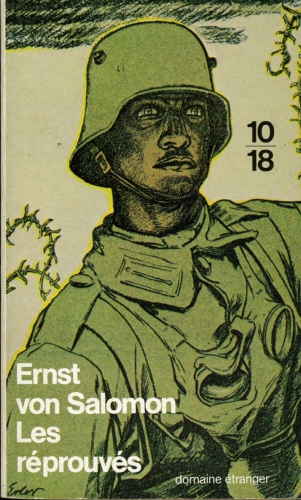 Pour ma génération qui a exactement vingt ans en 1976, c’est effectivement le livre Baltikum de Dominique Venner qui fait découvrir la geste des Corps Francs allemands d’après 1918. Par la suite, nous avons découvert assez rapidement Ernst von Salomon, dont Les Réprouvés étaient édités en « livre de poche » et que nous trimbalions dans nos cartables de collégiens.
Pour ma génération qui a exactement vingt ans en 1976, c’est effectivement le livre Baltikum de Dominique Venner qui fait découvrir la geste des Corps Francs allemands d’après 1918. Par la suite, nous avons découvert assez rapidement Ernst von Salomon, dont Les Réprouvés étaient édités en « livre de poche » et que nous trimbalions dans nos cartables de collégiens.
Ernst von Salomon est bien entendu davantage un activiste, un aventurier, qu’un théoricien, bien que sa voie existentielle soit riche d’enseignements, plus riche, bien évidemment, que les cogitations oiseuses d’un professeur en chambre. Il fut notamment impliqué dans les préparatifs de l’assassinat du ministre Walther Rathenau, artisan du pacte germano-soviétique de Rapallo en 1922. La vision politique de Rathenau était pourtant planiste, soucieuse de la santé économique de la nation, toujours apte à mon sens d’inspirer notre présent, et son intention, en signant le traité de Rapallo, était de donner à l’Allemagne, pressurée par les réparations exigées par la France, une solide marge de manœuvre en s’ouvrant à l’Est, source de matières premières, dont le pétrole du Caucase. Ernst von Salomon avouera que les fauteurs de l’attentat avaient été manipulés par les services britanniques, soucieux de maintenir le cœur géographique de l’Europe dans une dépendance énergétique occidentale. Ce dossier reste ouvert, cette vue reste à débattre, mais les thèses énoncées aujourd’hui par le spécialiste de la géopolitique énergétique, William F. Engdahl, ont démontré que les assassinats politiques en Allemagne ont toujours visé des hommes d’Etat, des banquiers ou des industriels qui cherchaient à diversifier les relations économiques de l’Allemagne pour réduire les dépendances du pays en matières premières et en débouchés extérieurs : en ce sens, Rathenau précède les victimes de la Rote Armee Fraktion ; sous Obama quand on pratique systématiquement les guerres de quatrième génération, nous avons, pour ruiner le dynamisme allemand, les récentes attaques contre Volkswagen ou l’actuelle submersion ethnique, assortie de l’effondrement parfaitement prévisible du système social allemand. Parce que l’industrie allemande prospère grâce aux commandes et au gaz russes et au commerce avec la Chine. Deux époques bien différentes, certes, mais même scénario de guerre indirecte, avec ou sans assassinats spectaculaires.
Ernst von Salomon se tiendra tranquille sous le nouveau régime national-socialiste, du moins extérieurement : l’exclusion le guettait en permanence car sa femme était d’origine juive. Son « immigration intérieure » consistera à créer des scénarios pour films. Il finira la guerre comme officier du Volkssturm dans une petite ville du sud de la Bavière. Arrêté par les Américains comme sympathisant du régime et aussi pour son passé « terroriste », il devient célèbre en répondant ironiquement au questionnaire des commissions de dénazification auxquelles il fut livré, alors qu’il n’avait jamais été ni adhérent formel ni sympathisant affiché de la NSDAP; il noircit alors des centaines de pages qui deviendront un best-seller (Der Fragebogen ou Le Questionnaire), aussi en France, dès les années 50. L’écrivain, l’ancien Cadet, le réprouvé qui a lutté dans les rangs des Corps Francs, doit, à ses yeux, traiter les établissements, quels qu’ils soient, par le sarcasme. Les qualités éthiques de ces figures héroïques ne peuvent se laisser enfermer dans des formes étriquées, qu’elles soient morales ou politiques. Avant l’accession des nationaux-socialistes au pouvoir en 1933, von Salomon, à peine sorti de prison, avait gardé l’idéal des Corps Francs, manière plus propre, pensait-il, comme Jünger, de faire de la politique que les compromissions politiciennes et partisanes. Il s’était placé dans le sillage du Capitaine Ehrhardt, ultérieurement poursuivi par la Gestapo. Il s’était désintéressé du combat légaliste du mouvement hitlérien, tout en étant déçu, comme beaucoup d’hommes jeunes et ardents, par les communistes, dirigés par une vieille dame respectable, féministe avant la lettre, menue et à la voix chevrotante, Clara Zetkin, qui, malgré son incontestable sincérité, ne parvenait pas à captiver les jeunes chevaux fougueux de l’époque, pressés de sortir de la terrible crise de 1929.
S’il faut trouver, dans les mouvances non-conformistes actuelles, une influence de l’existentialisme, du vrai, qu’ont incarné von Salomon et ses compagnons, on le cherchera dans un certain désintérêt pour tout combat politique inscrit dans l’électoralisme, même si d’aucuns, et non des moindres, trouveront cette posture vaine et improductive.
Si ce fut un phénomène essentiellement allemand, ce mouvement eut-il
des sympathies à l’extérieur de Weimar ?
Il est évident que la périphérie du Reich, où l’on parle des langues germaniques et où la langue de Goethe est correctement enseignée, comme la Suisse, la Scandinavie, les Pays-Bas ou la Flandre, a subi l’influence de la pensée allemande plus facilement que les pays de parlers romans ou slaves, exceptés sans soute ceux qui, comme la Hongrie, firent partie de la monarchie austro-hongroise. Certes, la Suisse, les pays scandinaves et la Hollande ont conservé une culture plus a-politique que les Allemands vaincus, comme le déplorait amèrement une figure peu connue, mais importante, de la « révolution conservatrice », Christoph Steding, auteur qui fustigeait la « culture neutre », purement esthétisante, de cette périphérie germanique, dégagée des obligations impériales, apanage de la nation allemande depuis Othon I, vainqueur des Magyars à Lechfeld en 955. Armin Mohler, originaire de la ville suisse de Bâle, a été sensible à cette critique, de même que certains « révolutionnaires conservateurs » de confession catholique en Hollande, influencé par Carl Schmitt. La protestation de Mohler -et aussi ses différends avec le Jünger des années 50 et 60 qui ne voulait plus entendre parler d’activisme politique- vient tout droit de sa posture personnelle initiale, d’adolescent et de jeune homme en révolte contre les milieux protestants et marchands bâlois : il rejetait toute la culture apolitique de sa ville natale, engoncée dans ses conventions sans relief.
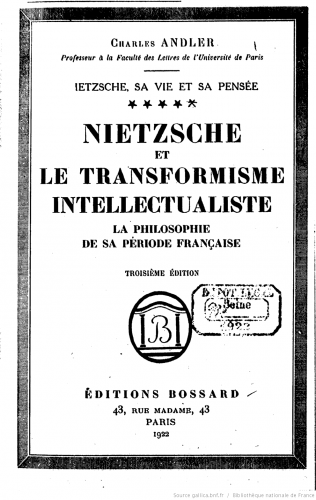 En France, la veine nietzschéenne et les progrès des études germaniques, sous l’impulsion de Charles Andler, introduisaient des ferments similaires à ceux qui agitaient la scène culturelle wilhelminienne en Allemagne avant 1914. Le filtre de la Grande Guerre fait que partout en Europe les postures politiques acquièrent une dimension plus « quiritaire ». En Angleterre, certains avant-gardistes optent pour des sympathies profascistes. David Herbert Lawrence rejette le puritanisme victorien, comme les Allemands avant 1914 avaient rejeté d’autres formes de rigorisme, en injectant dans la littérature anglaise des ferments d’organicisme à connotations sexuelles (« L’amant de Lady Chatterley »), en insistant sur la puissance tellurique inépuisable des religions primitives (du Mexique notamment), en démontrant dans Apocalypse que toute civilisation doit reposer sur un cycle liturgique naturel intangible ; il induit ainsi des ferments révolutionnaires conservateurs (il faut balayer les puritanismes, les rationalismes étriqués, etc. et maintenir les cycles liturgiques naturels, au moins comme le fait le catholicisme) dans la pensée anglo-saxonne, qui, liés aux filons celtisants et catholiques du nationalisme culturel irlandais, partiellement dérivés de Herder, s’insinuent, aujourd’hui encore, dans une quantité de démarches culturelles fécondes, observables dans les sociétés anglophones. Même si ces démarches ont parfois l’agaçant aspect du « New Age » ou du post-hippysme.
En France, la veine nietzschéenne et les progrès des études germaniques, sous l’impulsion de Charles Andler, introduisaient des ferments similaires à ceux qui agitaient la scène culturelle wilhelminienne en Allemagne avant 1914. Le filtre de la Grande Guerre fait que partout en Europe les postures politiques acquièrent une dimension plus « quiritaire ». En Angleterre, certains avant-gardistes optent pour des sympathies profascistes. David Herbert Lawrence rejette le puritanisme victorien, comme les Allemands avant 1914 avaient rejeté d’autres formes de rigorisme, en injectant dans la littérature anglaise des ferments d’organicisme à connotations sexuelles (« L’amant de Lady Chatterley »), en insistant sur la puissance tellurique inépuisable des religions primitives (du Mexique notamment), en démontrant dans Apocalypse que toute civilisation doit reposer sur un cycle liturgique naturel intangible ; il induit ainsi des ferments révolutionnaires conservateurs (il faut balayer les puritanismes, les rationalismes étriqués, etc. et maintenir les cycles liturgiques naturels, au moins comme le fait le catholicisme) dans la pensée anglo-saxonne, qui, liés aux filons celtisants et catholiques du nationalisme culturel irlandais, partiellement dérivés de Herder, s’insinuent, aujourd’hui encore, dans une quantité de démarches culturelles fécondes, observables dans les sociétés anglophones. Même si ces démarches ont parfois l’agaçant aspect du « New Age » ou du post-hippysme.
Les mondes de la pensée sont poreux : rien n’arrête les idées, qui se diffusent avec la subtilité d’un gaz, en empruntant le moindre interstice, la moindre lézarde. Il n’y avait pas de barrières étanches avant 1914, ni après 1918 ou 1945 ni aujourd’hui. Les filons exploités par la « révolution conservatrice », pour forger une société alternative, pour donner une épine dorsale aux Etats qu’elle entendait forger ou transformer, peuvent tous se retrouver dans le programme éditorial d’Eugen Diederichs, amorcé dès 1896. Socialisme organique, enraciné, pétri d’éthique religieuse, religiosité dégagée de toutes les cangues confessionnelles, mélange de Tolstoï, de Bergson, de thèses de la Fabian Society anglaise, plongée dans l’héritage mystique de l’Europe médiévale, sont autant d’éléments, toujours activables, pour se débarrasser de régimes politiques devenus répétitifs, ennuyeux voire insupportables à cause des mille et une balises qu’ils placent pour juguler les élans de l’âme humaine, prolixe, féconde, « in-encadrable ».
Notre époque meurt des répétitions ad nauseam du même corpus libéral arrosé de moraline hypocrite : le retour aux sources de la « révolution conservatrice » s’impose donc, à condition, bien sûr, que l’on remonte au programme du brave et bon éditeur Diederichs. Mieux : Diederichs ne s’est jamais cantonné dans un germanisme pacifique, mystique, néoromantique, activable en Allemagne seule voire peut-être en Scandinavie. Son programme annexe des éléments irlandais/celtiques, romantiques anglais, slaves et orthodoxes, flamands (les auteurs flamands seront privilégiés dans sa maison d’édition). L’Europe entière peut y retourner sans que les uns ou les autres n’aient à craindre d’y trouver des nationalismes tiers hostiles et vexants, pour sa propre identité ethno-nationale. La trajectoire politique et artistique du peintre et homme politique belgo-flamand War Van Overstraeten est emblématique d’un itinéraire à imiter pour tous : ce fondateur du parti communiste belge retrouve, dès le début des années 30, grâce à un engouement pour la mystique espagnole, les racines religieuses et personnalistes que Diederichs avait voulu généraliser en Europe avant 1914. L’itinéraire de Van Overstraeten mérite une étude approfondie en dehors de Flandre (où sa trajectoire a été minutieusement étudiée) pour montrer que même un engagement de gauche virulent doit nécessairement ramener aux idées que Diederichs avait voulu répandre dans notre continent tout entier et aussi en Amérique du Nord car il s’intéressait, entre autres œuvres, aux dimensions mystiques et naturalistes de Walt Whitman et aux idées de Ralph Waldo Emerson.
La Révolution conservatrice s’éteint-elle avec l’accession des nazis
au pouvoir ?
Le national-socialisme a procédé à une « mise au pas », que l’on nommait en allemand la Gleichschaltung. Celle-ci touche surtout la frange national-révolutionnaire et les plus turbulents activistes regroupés autour du Capitaine Ehrhardt. Niekisch est emprisonné en 1937. Ceux qui rejoignent les complots anti-hitlériens, comme celui qui a débouché sur l’attentat de Stauffenberg le 20 juillet 1944, seront impitoyablement éliminés. Les mouvements de jeunesse sont contraints d’adhérer aux organisations du parti. D’autres, c’est bien connu, se replient sur une « immigration intérieure », après avoir flirté brièvement avec le régime ou non. On pense au poète Gottfried Benn. Jünger cesse toute activité politique et entreprend sa longue série de voyages vers des terres vierges, non encore violentées par la modernité. Il devient aussi le mémorialiste inégalé qu’il demeurera pour les siècles des siècles. Mais dire que ces filons cessent d’être féconds parce qu’un régime, quel qu’il soit, prend le pouvoir par les urnes ou par un coup de force, est aberrant. Tous les idéologèmes de la « révolution conservatrice » sont restés vivants dans la pensée, même s’ils ne peuvent plus s’exprimer que partiellement, pour illustrer l’une ou l’autre facette éphémère du système libéral, beaucoup plus totalitaire que les régimes qui se voient attribuer cet adjectif désormais infâmant. Il y a un exemple tout récent : en Belgique, l’économiste et historien des idées économiques Paul Jorion vient de valser hors de son université parce qu’il travaillait sur des filons non orthodoxes de la pensée économique, filons hétérodoxes parce que tenant compte des facteurs sociaux et historiques dans la nécessaire démarche de l’économiste politique. Une économie, pense Jorion, surtout à la suite du Marx sociologue et de Keynes, est nécessairement imbriquée dans une société qui, elle, a une histoire dont tout praticien dans la sphère publique est obligé de tenir compte. Une économie ne peut se résumer à un fatras de théories mathématiques ou de statistiques toujours éphémères par définition. Les travaux de Jorion peuvent être lus en parallèle avec ceux de l’école canadienne dite de l’« écosociété », qui dénonce avec brio et minutie la « tyrannie de la valeur ». La recherche d’une telle hétérodoxie non oblitérante se retrouvait déjà dans le programme socialiste de Diederichs, dans les grands noms de l’école historique allemande, dans l’œuvre de François Perroux aux temps bien révolus (hélas !) de la France gaullienne d’après l’aventure algérienne. Aujourd’hui, ce que les historiens français de l’économie Jean-Marie Albertini et Ahmed Silem ont appelé justement les théories hétérodoxes, dans un manuel très répandu mais trop peu écouté et mis en pratique, sont le réservoir des idées rénovatrices que le monde attend. Preuve, une fois de plus, que les idées de la « révolution conservatrice », qui prônaient des pratiques hétérodoxes de l’économie, sont bel et bien immortelles.
Les auteurs de la Révolution conservatrice sont toujours cités par de
nombreux penseurs actuels, en quoi les idées qu’elle mettait de
l’avant sont elles encore actuelles ?
En fait, je viens de répondre à votre question mais, forcément, de manière partielle car le corpus assimilable à la « révolution conservatrice » et à la renaissance allemande du 19ème siècle englobe l’ensemble des sciences humaines que je ne peux aborder de façon exhaustive dans le cadre d’un modeste entretien. La pertinence actuelle de cet ensemble très vaste vient qu’il table sur des pensées organiques, celles mises en exergue par Gusdorf (cf. supra), alors que le système se pétrifie sous nos yeux à cause de son mécanicisme méthodologique initial et de son économisme statistique qui ne résout aucun problème. Pour camoufler cet échec, le système peinturlure ses discours incantatoires d’une forte couche de moraline insipide à laquelle plus aucune personne intelligente ne peut encore croire. En politique internationale, le refus de prendre en compte les linéaments des autres civilisations, dont celles de Chine et d’Inde qui sortent d’une longue léthargie, dont les filons chiites et alaouites du Levant et d’Iran, conduit à l’impasse. Il y a d’autres valeurs que celles énoncées à Washington ou dans le Paris de BHL. Armin Mohler, suite à Karl Jaspers qui patronnait sa thèse, disait que la « révolution conservatrice » (et nous ajouterions le romantisme décrit par Gusdorf et la renaissance allemande explicitée par Watson) inaugurait une nouvelle « période axiale » de l’histoire. Or, Max Weber et Julien Freund nous ont appris que les valeurs, générées par les périodes axiales, sont immortelles. Elles peuvent connaître des périodes de dormition, disait aussi Venner, mais, inévitablement, irrémédiablement, elles reviendront à l’avant-scène, en dépit et au grand dam des forces du non-être (Parvulesco) qui ont cherché à les étouffer.
(Forest-Flotzenberg, octobre 2015).
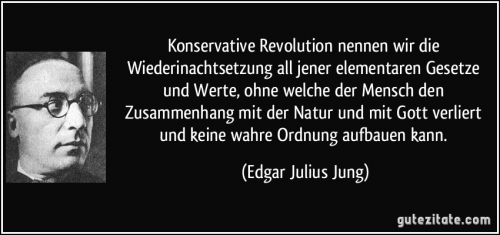

Toujours disponible aux Editions du Lore!
Pour commander la deuxième édition:
Steuckers/Révolution conservatrice
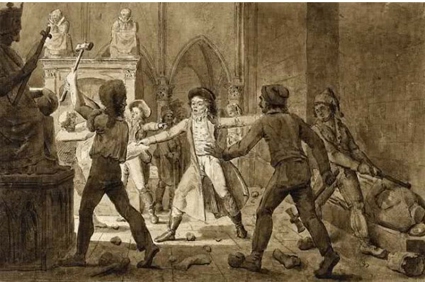 Mais beaucoup plus sérieux, la prise de la Bastille a inauguré le déchaînement d’une populace assoifée de sang, annonciatrice des horreurs à venir, avec ses têtes au bout d’une pique. Côté rage jacobine contre la pierre, on allait bientôt mettre la vitesse supérieure. Et mettre en scène le renversement de la statue d’Henri IV – oui, le roi populaire, le Vert galant, l’homme du « Paris vaut bien une messe ». Puis ce fut le tour de Louis XIV, Louis le Grand, le Roi-Soleil dont Stéphane Bern vient de nous offrir un portrait brillantissime dans son émission « Secrets d’Histoire » sur F2. Evidemment, Louis XV n’allait pas échapper au même sort. Dans la foulée commençaient les grandes dépradations infligées à Notre-Dame, aux Invalides et au Louvre.
Mais beaucoup plus sérieux, la prise de la Bastille a inauguré le déchaînement d’une populace assoifée de sang, annonciatrice des horreurs à venir, avec ses têtes au bout d’une pique. Côté rage jacobine contre la pierre, on allait bientôt mettre la vitesse supérieure. Et mettre en scène le renversement de la statue d’Henri IV – oui, le roi populaire, le Vert galant, l’homme du « Paris vaut bien une messe ». Puis ce fut le tour de Louis XIV, Louis le Grand, le Roi-Soleil dont Stéphane Bern vient de nous offrir un portrait brillantissime dans son émission « Secrets d’Histoire » sur F2. Evidemment, Louis XV n’allait pas échapper au même sort. Dans la foulée commençaient les grandes dépradations infligées à Notre-Dame, aux Invalides et au Louvre.




 En effet, il me paraît très important de replacer la révolution conservatrice allemande dans un contexte temporel plus vaste et plus profond, comme d’ailleurs Armin Mohler lui-même l’avait envisagé, suite à la publication des travaux de Zeev Sternhell sur la droite révolutionnaire française d’après 1870, qui représente une réaction musclée, une volonté de redresser la nation vaincue : après la défaite de 1918 et le Traité de Versailles de juin 1919, c’est ce modèle français qu’évoquait explicitement l’Alsacien Eduard Stadtler, un ultra-nationaliste allemand, bilingue, issu du Zentrum démocrate-chrétien, fondateur du Stahlhelm paramilitaire et compagnon de Moeller van den Bruck dans son combat métapolitique de 1918 à 1925. L’Allemagne devait susciter en son sein l’émergence d’un réseau de cercles intellectuels et politiques, d’associations diverses, de sociétés de pensée et de groupes paramilitaires pour redonner au Reich vaincu un statut de pleine souveraineté sur la scène européenne et internationale.
En effet, il me paraît très important de replacer la révolution conservatrice allemande dans un contexte temporel plus vaste et plus profond, comme d’ailleurs Armin Mohler lui-même l’avait envisagé, suite à la publication des travaux de Zeev Sternhell sur la droite révolutionnaire française d’après 1870, qui représente une réaction musclée, une volonté de redresser la nation vaincue : après la défaite de 1918 et le Traité de Versailles de juin 1919, c’est ce modèle français qu’évoquait explicitement l’Alsacien Eduard Stadtler, un ultra-nationaliste allemand, bilingue, issu du Zentrum démocrate-chrétien, fondateur du Stahlhelm paramilitaire et compagnon de Moeller van den Bruck dans son combat métapolitique de 1918 à 1925. L’Allemagne devait susciter en son sein l’émergence d’un réseau de cercles intellectuels et politiques, d’associations diverses, de sociétés de pensée et de groupes paramilitaires pour redonner au Reich vaincu un statut de pleine souveraineté sur la scène européenne et internationale. 
 A la fin du siècle, l’Europe, par le truchement de ces « sciences allemandes », dispose d’une masse de connaissances en tous domaines qui dépassent les petits mondes étriqués des politiques politiciennes, des rabâchages de la caste des juristes, des calculs mesquins du monde économique. Rien n’a changé sur ce plan. Quant à la révolution conservatrice proprement dite, qui veut débarrasser les sociétés européennes de toutes ces scories accumulées par avocats et financiers, politicards et spéculateurs, prêtres sans mystique et bourgeois égoïstes, elle démarre essentiellement par l’initiative que prend en 1896 l’éditeur Eugen Diederichs. Il cultivait l’ambition de proposer à la lecture et à la réflexion une formidable batterie d’idées innovantes capables, à terme, de modeler une société nouvelle, enclenchant de la sorte une révolution véritable qui ne suggère aucune table rase mais au contraire entend ré-enchanter les racines, étouffées sous les scories des conformismes. La même année, le jeune romantique Karl Fischer fonde le mouvement des Wandervögel, dont l’objectif est d’arracher la jeunesse à tous les conformismes et aussi de la sortir des sinistres quartiers surpeuplés des villes devenues tentaculaires suite à la révolution industrielle. Eugen Diederichs veut un socialisme non matérialiste, une religion nouvelle puisant dans la mémoire du peuple et renouant avec les mystiques médiévales (Maître Eckhart, Ruusbroec, Nicolas de Cues, etc.), une libéralisation sexuelle, un néo-romantisme inspiré par des sources allemandes, russes, flamandes ou scandinaves.
A la fin du siècle, l’Europe, par le truchement de ces « sciences allemandes », dispose d’une masse de connaissances en tous domaines qui dépassent les petits mondes étriqués des politiques politiciennes, des rabâchages de la caste des juristes, des calculs mesquins du monde économique. Rien n’a changé sur ce plan. Quant à la révolution conservatrice proprement dite, qui veut débarrasser les sociétés européennes de toutes ces scories accumulées par avocats et financiers, politicards et spéculateurs, prêtres sans mystique et bourgeois égoïstes, elle démarre essentiellement par l’initiative que prend en 1896 l’éditeur Eugen Diederichs. Il cultivait l’ambition de proposer à la lecture et à la réflexion une formidable batterie d’idées innovantes capables, à terme, de modeler une société nouvelle, enclenchant de la sorte une révolution véritable qui ne suggère aucune table rase mais au contraire entend ré-enchanter les racines, étouffées sous les scories des conformismes. La même année, le jeune romantique Karl Fischer fonde le mouvement des Wandervögel, dont l’objectif est d’arracher la jeunesse à tous les conformismes et aussi de la sortir des sinistres quartiers surpeuplés des villes devenues tentaculaires suite à la révolution industrielle. Eugen Diederichs veut un socialisme non matérialiste, une religion nouvelle puisant dans la mémoire du peuple et renouant avec les mystiques médiévales (Maître Eckhart, Ruusbroec, Nicolas de Cues, etc.), une libéralisation sexuelle, un néo-romantisme inspiré par des sources allemandes, russes, flamandes ou scandinaves. 

 Il faut se rappeler que le rejet le mieux charpenté de la démocratie libérale et surtout de ses dérives partitocratiques ne provient pas d’un mouvement ou cénacle émanant d’une droite posée comme « conservatrice-révolutionnaire » mais d’une haute figure de la social-démocratie allemande et européenne, Roberto Michels, actif en Belgique, en Allemagne et en Italie avant 1914. Ici aussi, je ne fais pas d’anachronisme : à l’université en 1974, on nous conseillait la lecture de sa critique des oligarchies politiciennes (sociaux-démocrates compris) ; après une éclipse navrante de quelques décennies, je constate avec bonheur qu’une grande maison française, Gallimard-Folio, vient de rééditer sa Sociologie du parti dans la démocratie moderne (Zur Soziologie des Parteiwesens), qui démontre avec une clarté inégalée les dérives dangereuses d’une démocratie partitocratique : coupure avec la base, oligarchisation, règne des « bonzes », compromis contraires aux promesses électorales et aux programmes, bref, les maux que tous sont bien contraints de constater aujourd’hui en Europe et ailleurs, en plus amplifiés ! Michels suggère des correctifs : référendum (démocratie directe), renonciation (aux modes de vie matérialistes et bourgeois, ascétisme de l’élite politique se voulant alternative), etc. Dans cet ouvrage fondamental des sciences politiques, Michels vise à dépasser tout ce qui fait le ronron d’un parti (et, partant, d’une vie politique nationale orchestrée autour du jeu répétitif des élections récurrentes d’un certain nombre de partis établis) et suggère des pistes pour échapper à ces enlisements ; elles annoncent les aspirations ultérieures des conservateurs-révolutionnaires (ou assimilés) d’après 1918 et surtout d’après Locarno, sans oublier les futurs non-conformistes français des années 30 et ceux qui, aujourd’hui, cherchent à sortir des impasses où nous ont fourvoyés les établis. Ces pistes insistent sur la nécessité d’avoir des élites politiques ascétiques, sur une virulence correctrice que Michels croyait déceler dans le syndicalisme révolutionnaire (et ses versions italiennes comme celles activées par Filippo Corridoni avant 1914 – Corridoni tombera au front en 1915), dans les idées activistes de Georges Sorel et dans certaines formes d’anarchisme hostiles aux hiérarchies figées. L’idée-clef est de traquer partout, dans les formes de représentation politique, les éléments négatifs qui figent, qui induisent des répétitions lesquelles annulent l’effervescence révolutionnaire ou la dynamique douce/naturelle du peuple, oblitèrent la spontanéité des masses (on y reviendra en mai 68 !). En ce sens, les idées de Michels, Corridoni et Sorel entendent conserver les potentialités vivantes du peuple qui, le cas échéant et quand nécessité fait loi, sont capables de faire éclore un mouvement révolutionnaire correcteur et éradicateur des fixismes répétitifs.
Il faut se rappeler que le rejet le mieux charpenté de la démocratie libérale et surtout de ses dérives partitocratiques ne provient pas d’un mouvement ou cénacle émanant d’une droite posée comme « conservatrice-révolutionnaire » mais d’une haute figure de la social-démocratie allemande et européenne, Roberto Michels, actif en Belgique, en Allemagne et en Italie avant 1914. Ici aussi, je ne fais pas d’anachronisme : à l’université en 1974, on nous conseillait la lecture de sa critique des oligarchies politiciennes (sociaux-démocrates compris) ; après une éclipse navrante de quelques décennies, je constate avec bonheur qu’une grande maison française, Gallimard-Folio, vient de rééditer sa Sociologie du parti dans la démocratie moderne (Zur Soziologie des Parteiwesens), qui démontre avec une clarté inégalée les dérives dangereuses d’une démocratie partitocratique : coupure avec la base, oligarchisation, règne des « bonzes », compromis contraires aux promesses électorales et aux programmes, bref, les maux que tous sont bien contraints de constater aujourd’hui en Europe et ailleurs, en plus amplifiés ! Michels suggère des correctifs : référendum (démocratie directe), renonciation (aux modes de vie matérialistes et bourgeois, ascétisme de l’élite politique se voulant alternative), etc. Dans cet ouvrage fondamental des sciences politiques, Michels vise à dépasser tout ce qui fait le ronron d’un parti (et, partant, d’une vie politique nationale orchestrée autour du jeu répétitif des élections récurrentes d’un certain nombre de partis établis) et suggère des pistes pour échapper à ces enlisements ; elles annoncent les aspirations ultérieures des conservateurs-révolutionnaires (ou assimilés) d’après 1918 et surtout d’après Locarno, sans oublier les futurs non-conformistes français des années 30 et ceux qui, aujourd’hui, cherchent à sortir des impasses où nous ont fourvoyés les établis. Ces pistes insistent sur la nécessité d’avoir des élites politiques ascétiques, sur une virulence correctrice que Michels croyait déceler dans le syndicalisme révolutionnaire (et ses versions italiennes comme celles activées par Filippo Corridoni avant 1914 – Corridoni tombera au front en 1915), dans les idées activistes de Georges Sorel et dans certaines formes d’anarchisme hostiles aux hiérarchies figées. L’idée-clef est de traquer partout, dans les formes de représentation politique, les éléments négatifs qui figent, qui induisent des répétitions lesquelles annulent l’effervescence révolutionnaire ou la dynamique douce/naturelle du peuple, oblitèrent la spontanéité des masses (on y reviendra en mai 68 !). En ce sens, les idées de Michels, Corridoni et Sorel entendent conserver les potentialités vivantes du peuple qui, le cas échéant et quand nécessité fait loi, sont capables de faire éclore un mouvement révolutionnaire correcteur et éradicateur des fixismes répétitifs. 
 Reste aussi un autre problème que l’époque et ses avant-gardes politiques et littéraires ont tenté de résoudre dans la pétulance et l’intempérance : celui de la vitesse. Chez les futuristes, c’est clair, surtout dans certaines de leurs plus belles œuvres picturales, la vitesse est l’ivresse du monde, le mode exaltant qui, maîtrisé ou chevauché, permet d’échapper justement aux fixismes, au « passatismo ». A gauche aussi, la révolution a pour but de réaliser vite les aspirations populaires. Le prolétariat révolutionnaire des bolcheviques, une fois au pouvoir, maîtrise les machines et les rapidités qu’elles procurent. Le conseillisme bavarois, quant à lui, ne souhaitait pas effacer les spontanéités vitales de la population. Le fascisme de Mussolini, venu du socialisme et du syndicalisme sorélien et corrodinien, ne l’oublions jamais, entend réaliser en six heures ce que la démocratie parlementaire et palabrante (et donc lente, hyper-lente) fait en six ans. Les réactionnaires, que les futuristes ou les bolcheviques jugeront « passéistes », rappelaient que la prise de décision du monarque ou du petit nombre dans les anciens régimes était plus rapide que celle des parlements (d’où la présence récurrente de figures de la contre-révolution française dans les démarches intellectuelles d’Ernst Jünger, fussent-elles les plus maximalistes avant 1925). Un système politique cohérent, pour les avant-gardes des années 20, doit donc pouvoir décider rapidement, à la vitesse des nouvelles machines, des bolides Bugatti ou Mercedes, des avions des pionniers de l’air, des vedettes rapides des nouvelles forces navales (d’Annunzio). Une force politique nouvelle, démocratique ou non (Fiume est une démocratie avant-gardiste !), doit être décisionnaire et rapide, donc jeune. Si elle est parlementaire et palabrante, elle est lente donc vieille et cette sénilité pétrifiée mérite d’être jetée bas. La double idée de décision et de rapidité d’exécution est évidemment présente dans le nationalisme soldatique et explique pourquoi le coup de force est considéré comme plus efficace et plus propre que les palabres parlementaires. Elle apparait ensuite dans la théorie politique plus élaborée et plus juridique de Carl Schmitt, qui rejette le normativisme (comme étant un système de règles figées finalement incapacitantes quand le danger guette la Cité, où la « lex », par sa lourde présence, sape l’action du « rex ») et le positivisme juridique, trop technique et inattentif aux valeurs pérennes. Schmitt, décisionniste, prône évidemment le décisionnisme, dont il est le représentant le plus emblématique, et insiste sur la nécessité permanente d’agir au sein d’ordres concrets, réellement existants, hérités, légués par l’histoire et les traditions politiques de la Cité (ce qui implique le rejet de toute volonté de créer un « Etat mondial »).
Reste aussi un autre problème que l’époque et ses avant-gardes politiques et littéraires ont tenté de résoudre dans la pétulance et l’intempérance : celui de la vitesse. Chez les futuristes, c’est clair, surtout dans certaines de leurs plus belles œuvres picturales, la vitesse est l’ivresse du monde, le mode exaltant qui, maîtrisé ou chevauché, permet d’échapper justement aux fixismes, au « passatismo ». A gauche aussi, la révolution a pour but de réaliser vite les aspirations populaires. Le prolétariat révolutionnaire des bolcheviques, une fois au pouvoir, maîtrise les machines et les rapidités qu’elles procurent. Le conseillisme bavarois, quant à lui, ne souhaitait pas effacer les spontanéités vitales de la population. Le fascisme de Mussolini, venu du socialisme et du syndicalisme sorélien et corrodinien, ne l’oublions jamais, entend réaliser en six heures ce que la démocratie parlementaire et palabrante (et donc lente, hyper-lente) fait en six ans. Les réactionnaires, que les futuristes ou les bolcheviques jugeront « passéistes », rappelaient que la prise de décision du monarque ou du petit nombre dans les anciens régimes était plus rapide que celle des parlements (d’où la présence récurrente de figures de la contre-révolution française dans les démarches intellectuelles d’Ernst Jünger, fussent-elles les plus maximalistes avant 1925). Un système politique cohérent, pour les avant-gardes des années 20, doit donc pouvoir décider rapidement, à la vitesse des nouvelles machines, des bolides Bugatti ou Mercedes, des avions des pionniers de l’air, des vedettes rapides des nouvelles forces navales (d’Annunzio). Une force politique nouvelle, démocratique ou non (Fiume est une démocratie avant-gardiste !), doit être décisionnaire et rapide, donc jeune. Si elle est parlementaire et palabrante, elle est lente donc vieille et cette sénilité pétrifiée mérite d’être jetée bas. La double idée de décision et de rapidité d’exécution est évidemment présente dans le nationalisme soldatique et explique pourquoi le coup de force est considéré comme plus efficace et plus propre que les palabres parlementaires. Elle apparait ensuite dans la théorie politique plus élaborée et plus juridique de Carl Schmitt, qui rejette le normativisme (comme étant un système de règles figées finalement incapacitantes quand le danger guette la Cité, où la « lex », par sa lourde présence, sape l’action du « rex ») et le positivisme juridique, trop technique et inattentif aux valeurs pérennes. Schmitt, décisionniste, prône évidemment le décisionnisme, dont il est le représentant le plus emblématique, et insiste sur la nécessité permanente d’agir au sein d’ordres concrets, réellement existants, hérités, légués par l’histoire et les traditions politiques de la Cité (ce qui implique le rejet de toute volonté de créer un « Etat mondial »). Ernst Niekisch est un révolutionnaire de gauche pur jus. Il a participé à un gouvernement des Conseils en Bavière, lesquels seront balayés par les Corps Francs de von Epp. Dans ce gouvernement, figurait également Gustav Landauer, penseur anarchiste éminemment fécond, puisant à des sources intéressantes du 19ème siècle et développant une anthropologie compénétrée de mystique. Ce premier gouvernement des Conseils, non explicitement communiste, sera renversé par les bolcheviques du KPD, provoquant chez Landauer une immense déception. Pour lui, la politique révolutionnaire bavaroise sombrait, par ce coup de force, dans les rigidités léninistes et perdait son originalité unique. Niekisch était sans nul doute plus marqué par le marxisme de la social-démocratie d’avant 1914 mais sous l’influence d’un camarade aussi subtil que Landauer, il a dû ajouter à sa formation initiale des éléments moins conventionnels, notamment plus communautaires-anarchisants (héritage de Bakounine et Kropotkine). Cet anarchisme, hostile à toute rigidité et répétition, Niekisch le couple à des idéaux paysans/ruralistes présents dans les « sources du communisme russe » (explorées par Berdiaev) ou chez Tolstoï (édité par Diederichs) et, bien entendu, chez les folcistes (Völkischen) allemands, lesquels étaient plutôt classés « à droite ». Cette mythologie nouvelle devient alors chez Niekisch un mixte de prolétarisme socialiste et de ruralisme germano-russe, saupoudré de quelques oripeaux libertaires légués par Landauer, le tout pour favoriser une révolution allemande philo-soviétique, destinée à libérer les ouvriers et les paysans d’Allemagne d’une bourgeoisie pro-occidentale qui acceptait les réparations imposées par l’Ouest lors du Traité de Versailles, au détriment de son propre peuple, et les crédits américains des Plans Young et Dawes, limitant la souveraineté nationale.
Ernst Niekisch est un révolutionnaire de gauche pur jus. Il a participé à un gouvernement des Conseils en Bavière, lesquels seront balayés par les Corps Francs de von Epp. Dans ce gouvernement, figurait également Gustav Landauer, penseur anarchiste éminemment fécond, puisant à des sources intéressantes du 19ème siècle et développant une anthropologie compénétrée de mystique. Ce premier gouvernement des Conseils, non explicitement communiste, sera renversé par les bolcheviques du KPD, provoquant chez Landauer une immense déception. Pour lui, la politique révolutionnaire bavaroise sombrait, par ce coup de force, dans les rigidités léninistes et perdait son originalité unique. Niekisch était sans nul doute plus marqué par le marxisme de la social-démocratie d’avant 1914 mais sous l’influence d’un camarade aussi subtil que Landauer, il a dû ajouter à sa formation initiale des éléments moins conventionnels, notamment plus communautaires-anarchisants (héritage de Bakounine et Kropotkine). Cet anarchisme, hostile à toute rigidité et répétition, Niekisch le couple à des idéaux paysans/ruralistes présents dans les « sources du communisme russe » (explorées par Berdiaev) ou chez Tolstoï (édité par Diederichs) et, bien entendu, chez les folcistes (Völkischen) allemands, lesquels étaient plutôt classés « à droite ». Cette mythologie nouvelle devient alors chez Niekisch un mixte de prolétarisme socialiste et de ruralisme germano-russe, saupoudré de quelques oripeaux libertaires légués par Landauer, le tout pour favoriser une révolution allemande philo-soviétique, destinée à libérer les ouvriers et les paysans d’Allemagne d’une bourgeoisie pro-occidentale qui acceptait les réparations imposées par l’Ouest lors du Traité de Versailles, au détriment de son propre peuple, et les crédits américains des Plans Young et Dawes, limitant la souveraineté nationale. Pour ma génération qui a exactement vingt ans en 1976, c’est effectivement le livre Baltikum de Dominique Venner qui fait découvrir la geste des Corps Francs allemands d’après 1918. Par la suite, nous avons découvert assez rapidement Ernst von Salomon, dont Les Réprouvés étaient édités en « livre de poche » et que nous trimbalions dans nos cartables de collégiens.
Pour ma génération qui a exactement vingt ans en 1976, c’est effectivement le livre Baltikum de Dominique Venner qui fait découvrir la geste des Corps Francs allemands d’après 1918. Par la suite, nous avons découvert assez rapidement Ernst von Salomon, dont Les Réprouvés étaient édités en « livre de poche » et que nous trimbalions dans nos cartables de collégiens.  En France, la veine nietzschéenne et les progrès des études germaniques, sous l’impulsion de Charles Andler, introduisaient des ferments similaires à ceux qui agitaient la scène culturelle wilhelminienne en Allemagne avant 1914. Le filtre de la Grande Guerre fait que partout en Europe les postures politiques acquièrent une dimension plus « quiritaire ». En Angleterre, certains avant-gardistes optent pour des sympathies profascistes. David Herbert Lawrence rejette le puritanisme victorien, comme les Allemands avant 1914 avaient rejeté d’autres formes de rigorisme, en injectant dans la littérature anglaise des ferments d’organicisme à connotations sexuelles (« L’amant de Lady Chatterley »), en insistant sur la puissance tellurique inépuisable des religions primitives (du Mexique notamment), en démontrant dans Apocalypse que toute civilisation doit reposer sur un cycle liturgique naturel intangible ; il induit ainsi des ferments révolutionnaires conservateurs (il faut balayer les puritanismes, les rationalismes étriqués, etc. et maintenir les cycles liturgiques naturels, au moins comme le fait le catholicisme) dans la pensée anglo-saxonne, qui, liés aux filons celtisants et catholiques du nationalisme culturel irlandais, partiellement dérivés de Herder, s’insinuent, aujourd’hui encore, dans une quantité de démarches culturelles fécondes, observables dans les sociétés anglophones. Même si ces démarches ont parfois l’agaçant aspect du « New Age » ou du post-hippysme.
En France, la veine nietzschéenne et les progrès des études germaniques, sous l’impulsion de Charles Andler, introduisaient des ferments similaires à ceux qui agitaient la scène culturelle wilhelminienne en Allemagne avant 1914. Le filtre de la Grande Guerre fait que partout en Europe les postures politiques acquièrent une dimension plus « quiritaire ». En Angleterre, certains avant-gardistes optent pour des sympathies profascistes. David Herbert Lawrence rejette le puritanisme victorien, comme les Allemands avant 1914 avaient rejeté d’autres formes de rigorisme, en injectant dans la littérature anglaise des ferments d’organicisme à connotations sexuelles (« L’amant de Lady Chatterley »), en insistant sur la puissance tellurique inépuisable des religions primitives (du Mexique notamment), en démontrant dans Apocalypse que toute civilisation doit reposer sur un cycle liturgique naturel intangible ; il induit ainsi des ferments révolutionnaires conservateurs (il faut balayer les puritanismes, les rationalismes étriqués, etc. et maintenir les cycles liturgiques naturels, au moins comme le fait le catholicisme) dans la pensée anglo-saxonne, qui, liés aux filons celtisants et catholiques du nationalisme culturel irlandais, partiellement dérivés de Herder, s’insinuent, aujourd’hui encore, dans une quantité de démarches culturelles fécondes, observables dans les sociétés anglophones. Même si ces démarches ont parfois l’agaçant aspect du « New Age » ou du post-hippysme. 


 del.icio.us
del.icio.us
 Digg
Digg
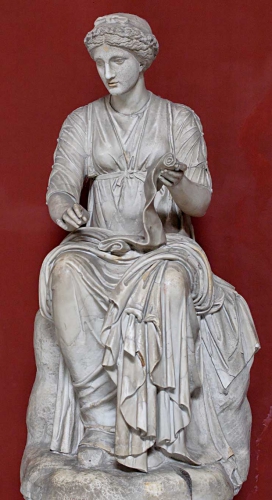

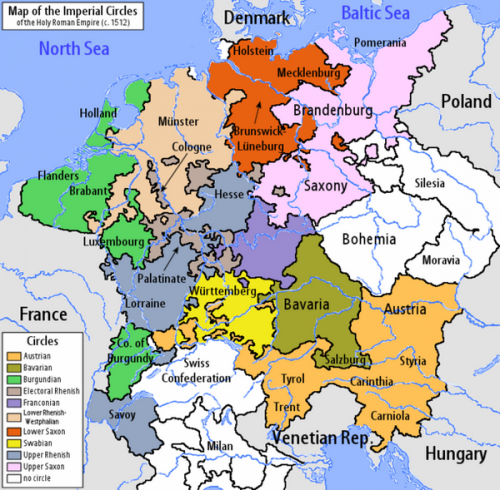
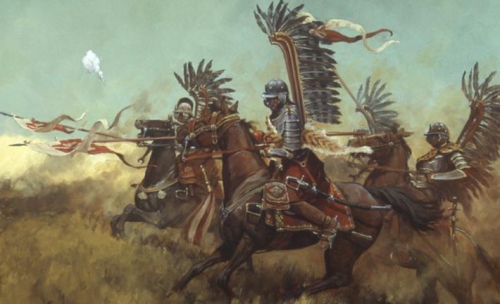



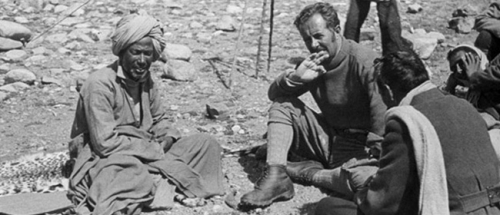
 In una relazione sulla sua missione in India, inviata il 31 marzo 1931 al ministro degli Esteri Dino Grandi, Tucci propose la fondazione di un istituto culturale finalizzato ad agevolare gli studi dei giovani Indiani in Italia e presso le istituzioni italiane, a promuovere la conoscenza dell'Italia in India, a mettere in contatto studiosi indiani e italiani dagli interessi affini. Mussolini, che giа accarezzava l'idea di dar vita ad un istituto per le relazioni italo-indiane, ricevette in udienza il professore maceratese e rimase d'accordo con lui che avrebbe esaminato il suo progetto quando egli fosse ritornato dal viaggio di esplorazione che si accingeva ad intraprendere nel Tibet. Rientrato in Italia nel novembre del 1931, Tucci riuscм a coinvolgere nel suo progetto il presidente dell'Accademia d'Italia, Giovanni Gentile, che nel luglio dell'anno successivo ottenne dal Duce l'approvazione definitiva.
In una relazione sulla sua missione in India, inviata il 31 marzo 1931 al ministro degli Esteri Dino Grandi, Tucci propose la fondazione di un istituto culturale finalizzato ad agevolare gli studi dei giovani Indiani in Italia e presso le istituzioni italiane, a promuovere la conoscenza dell'Italia in India, a mettere in contatto studiosi indiani e italiani dagli interessi affini. Mussolini, che giа accarezzava l'idea di dar vita ad un istituto per le relazioni italo-indiane, ricevette in udienza il professore maceratese e rimase d'accordo con lui che avrebbe esaminato il suo progetto quando egli fosse ritornato dal viaggio di esplorazione che si accingeva ad intraprendere nel Tibet. Rientrato in Italia nel novembre del 1931, Tucci riuscм a coinvolgere nel suo progetto il presidente dell'Accademia d'Italia, Giovanni Gentile, che nel luglio dell'anno successivo ottenne dal Duce l'approvazione definitiva.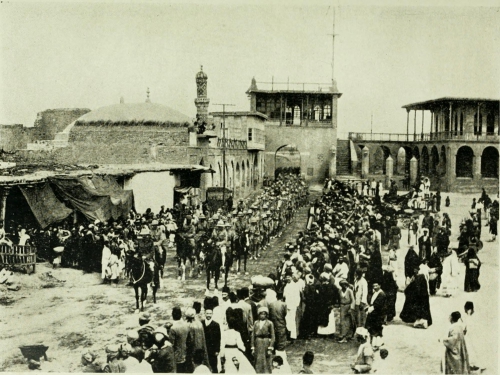
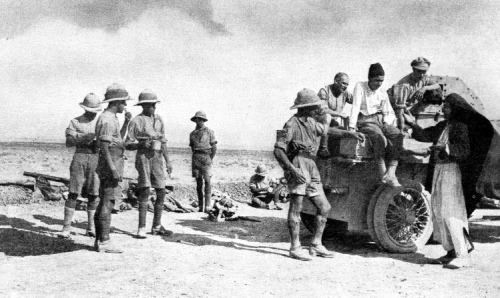
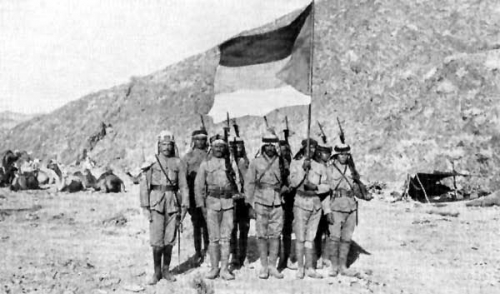

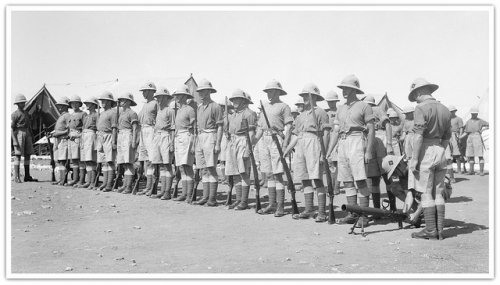
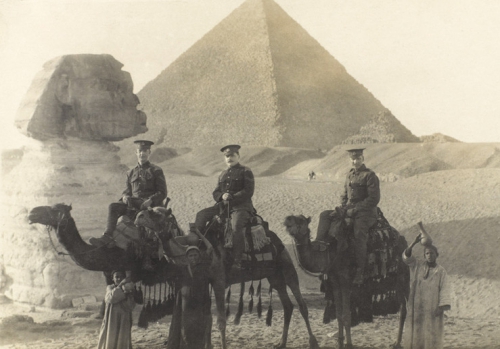


 Nous ne sommes pas familiers de la forme impériale développée par le Saint Empire romain germanique réunissant les territoires italiens, bourguignon et germanique à l'origine, émancipant par la suite les deux premiers. Elle s'étend pourtant sur près de neuf siècles, et constitue le grand modèle institutionnel duquel se démarqua l'État souverain. Si Pufendorf a pu le qualifier de « monstre politique », « irregulare aliquod corpus et montro simile », il n'en reste pas moins que sa longévité nous incline à considérer sérieusement la forme institutionnelle de ce pouvoir. Nous en rappellerons brièvement les éléments essentiels, d'un point de vue normatif plus qu'historique. Le titre de Saint Empire romain germanique, das Heilige Römische Reich deutscher Nation, ne commence à être utilisé qu'à la fin du XVe siècle. Mais il n'est encore ni une appellation officielle, ni une seule utilisée pour décrire la situation politique de l'Empire germanique. L'ambition de cette désignation consiste à trouver un critère discriminant d'appartenance des différents peuples germaniques à une structure politique commune.
Nous ne sommes pas familiers de la forme impériale développée par le Saint Empire romain germanique réunissant les territoires italiens, bourguignon et germanique à l'origine, émancipant par la suite les deux premiers. Elle s'étend pourtant sur près de neuf siècles, et constitue le grand modèle institutionnel duquel se démarqua l'État souverain. Si Pufendorf a pu le qualifier de « monstre politique », « irregulare aliquod corpus et montro simile », il n'en reste pas moins que sa longévité nous incline à considérer sérieusement la forme institutionnelle de ce pouvoir. Nous en rappellerons brièvement les éléments essentiels, d'un point de vue normatif plus qu'historique. Le titre de Saint Empire romain germanique, das Heilige Römische Reich deutscher Nation, ne commence à être utilisé qu'à la fin du XVe siècle. Mais il n'est encore ni une appellation officielle, ni une seule utilisée pour décrire la situation politique de l'Empire germanique. L'ambition de cette désignation consiste à trouver un critère discriminant d'appartenance des différents peuples germaniques à une structure politique commune. Mais l'Empire romain auquel on est renvoyé n'est pas celui de César et d'Auguste ; c'est celui de Constantin. Charlemagne inaugure cette Renovatio Imperii en se faisant couronner par le pape en 800 : l'onction papale seule pouvait assurer la mission sacrée remplie par l'empereur. Par ce geste, Charlemagne entendait reprendre le modèle romain d'une union politique de peuples divers, usant de l'autorité spirituelle pour valider ses décisions. Ce qui réinscrit le mouvement de l'Empire germanique dans la forme de l'Empire romain, et permet à l'empereur de distinguer son pouvoir de celui des autres princes allemands, de le placer dans un rapport de transcendance repris de la référence à l'Empire romain. Il permet de fonder la supériorité du pouvoir de l'empereur et inscrit par là la forme impériale dans le mouvement d'un devenir historique précis, en reprenant le critère de l'universalité et en y adjoignant le critère de protection que son pouvoir devra prendre comme fil conducteur, assumé par l'adjectif heilig.
Mais l'Empire romain auquel on est renvoyé n'est pas celui de César et d'Auguste ; c'est celui de Constantin. Charlemagne inaugure cette Renovatio Imperii en se faisant couronner par le pape en 800 : l'onction papale seule pouvait assurer la mission sacrée remplie par l'empereur. Par ce geste, Charlemagne entendait reprendre le modèle romain d'une union politique de peuples divers, usant de l'autorité spirituelle pour valider ses décisions. Ce qui réinscrit le mouvement de l'Empire germanique dans la forme de l'Empire romain, et permet à l'empereur de distinguer son pouvoir de celui des autres princes allemands, de le placer dans un rapport de transcendance repris de la référence à l'Empire romain. Il permet de fonder la supériorité du pouvoir de l'empereur et inscrit par là la forme impériale dans le mouvement d'un devenir historique précis, en reprenant le critère de l'universalité et en y adjoignant le critère de protection que son pouvoir devra prendre comme fil conducteur, assumé par l'adjectif heilig. Mais les deux autorités se heurtent encore violemment. Il était fait usage du célèbre faux de Constantin – la « Donation de Constantin » - pour légitimer les revendications ecclésiastiques
Mais les deux autorités se heurtent encore violemment. Il était fait usage du célèbre faux de Constantin – la « Donation de Constantin » - pour légitimer les revendications ecclésiastiques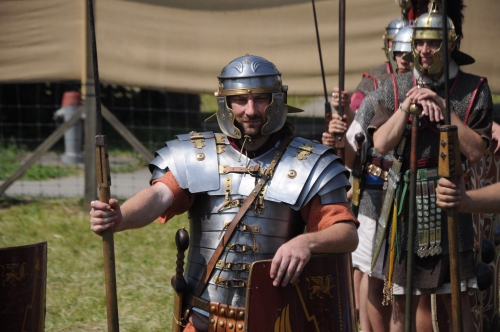
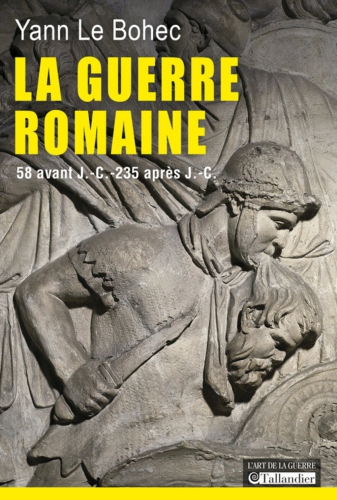 La qualité de l’armée romaine venait aussi de sa polyvalence et de sa capacité d’adaptation à toutes les situations. A l’aise dans toutes les formes de combat, elle n’a jamais hésité à emprunter aux autres peuples ce qui pouvait parfaire son efficacité. L’héritage grec fut ici aussi fondamental, notamment en ce qui concerne la poliorcétique (l’art du siège). Par ailleurs, l’armée romaine se caractérisait par une tactique de combat où rien n’était laissé au hasard. La logistique, les services, le génie, le renseignement, la santé et les transmissions avaient été développés comme dans aucune autre armée de l’antiquité. La stratégie, à savoir la mise en œuvre des divers moyens de gagner, était très étudiée et les conflits étaient préparés par des actions politiques ou diplomatiques et s’appuyaient sur une économie prospère.
La qualité de l’armée romaine venait aussi de sa polyvalence et de sa capacité d’adaptation à toutes les situations. A l’aise dans toutes les formes de combat, elle n’a jamais hésité à emprunter aux autres peuples ce qui pouvait parfaire son efficacité. L’héritage grec fut ici aussi fondamental, notamment en ce qui concerne la poliorcétique (l’art du siège). Par ailleurs, l’armée romaine se caractérisait par une tactique de combat où rien n’était laissé au hasard. La logistique, les services, le génie, le renseignement, la santé et les transmissions avaient été développés comme dans aucune autre armée de l’antiquité. La stratégie, à savoir la mise en œuvre des divers moyens de gagner, était très étudiée et les conflits étaient préparés par des actions politiques ou diplomatiques et s’appuyaient sur une économie prospère.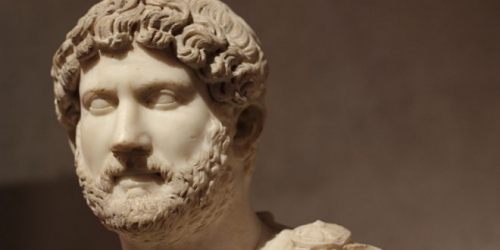
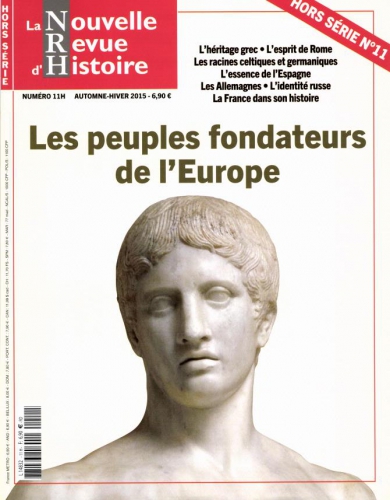
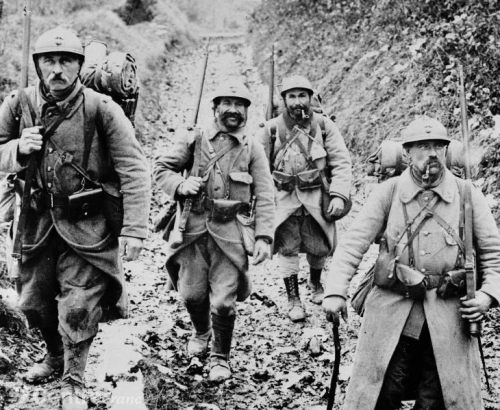
 Fabrice Dutilleul : En cette période de « centenaire » ne peut-on considérer 1914-1918 comme un sujet aujourd’hui rebattu ?
Fabrice Dutilleul : En cette période de « centenaire » ne peut-on considérer 1914-1918 comme un sujet aujourd’hui rebattu ?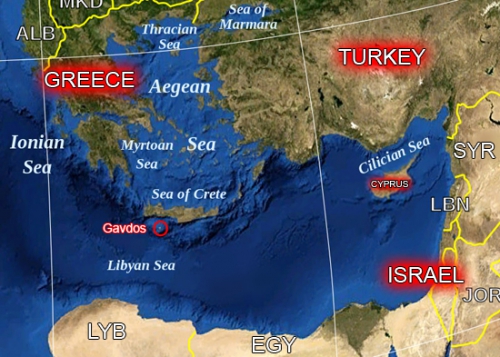
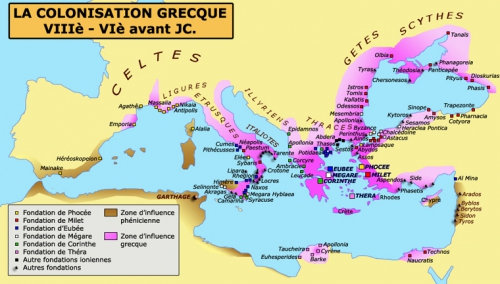

 Toynbee, avec sa thèse bithynienne, a démontré, lui, que si l’hellénité (romaine ou byzantine) perd la Bithynie proche du Bosphore et disposant d’une façade pontique, la puissance qui s’en empareraitpourrait aiséments’étendre dans toutes les directions : vers les Balkans et le Danube, vers la Crimée, la Mer Noire et le cours des grands fleuves russes, vers le Caucase (la Colchide), tremplin vers l’Orient perse, vers l’Egypte en longeant les côtes syrienne, libanaise, palestinienne et sinaïque, vers le Nil, artère menant droit au cœur de l’Afrique orientale, vers la Mer Rouge qui donne accès au commerce avec l’Inde et la Chine, vers la Mésopotamie et le Golfe Persique. L’aventure ottomane, depuis la base initiale des territoires bithynien et péri-bithynien d’Osman, prouve largement la pertinence de cette thèse. L’expansion ottomane a créé un verrou d’enclavement contre lequel l’Europe a buté pendant de longs siècles. La Turquie kémaliste, en rejetant l’héritage ottoman, a toutefois conservé un pouvoir régional réel et un pouvoir global potentiel en maintenant le territoire bithynien sous sa souveraineté. Même si elle n’a plus les moyens techniques, donc militaires, de reprendre l’expansion ottomane, la Turquie actuelle, post-kémaliste, garde des atouts précieux, simplement par sa position géographique qui fait d’elle, même affaiblie, une puissance régionale incontournable.
Toynbee, avec sa thèse bithynienne, a démontré, lui, que si l’hellénité (romaine ou byzantine) perd la Bithynie proche du Bosphore et disposant d’une façade pontique, la puissance qui s’en empareraitpourrait aiséments’étendre dans toutes les directions : vers les Balkans et le Danube, vers la Crimée, la Mer Noire et le cours des grands fleuves russes, vers le Caucase (la Colchide), tremplin vers l’Orient perse, vers l’Egypte en longeant les côtes syrienne, libanaise, palestinienne et sinaïque, vers le Nil, artère menant droit au cœur de l’Afrique orientale, vers la Mer Rouge qui donne accès au commerce avec l’Inde et la Chine, vers la Mésopotamie et le Golfe Persique. L’aventure ottomane, depuis la base initiale des territoires bithynien et péri-bithynien d’Osman, prouve largement la pertinence de cette thèse. L’expansion ottomane a créé un verrou d’enclavement contre lequel l’Europe a buté pendant de longs siècles. La Turquie kémaliste, en rejetant l’héritage ottoman, a toutefois conservé un pouvoir régional réel et un pouvoir global potentiel en maintenant le territoire bithynien sous sa souveraineté. Même si elle n’a plus les moyens techniques, donc militaires, de reprendre l’expansion ottomane, la Turquie actuelle, post-kémaliste, garde des atouts précieux, simplement par sa position géographique qui fait d’elle, même affaiblie, une puissance régionale incontournable. 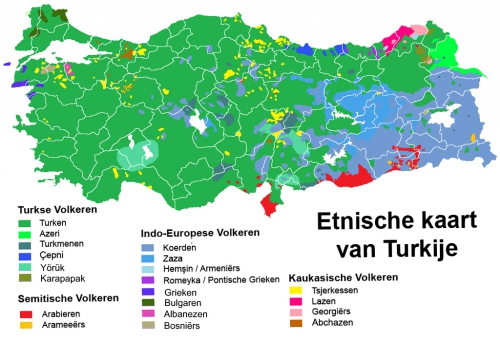
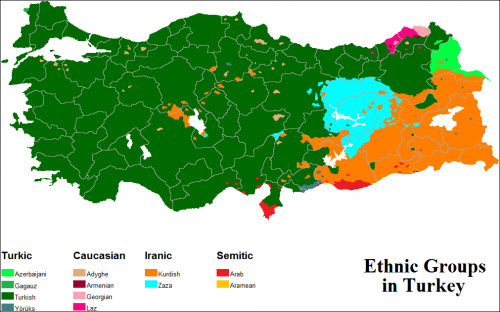
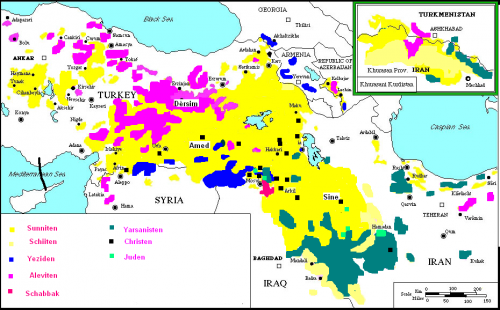

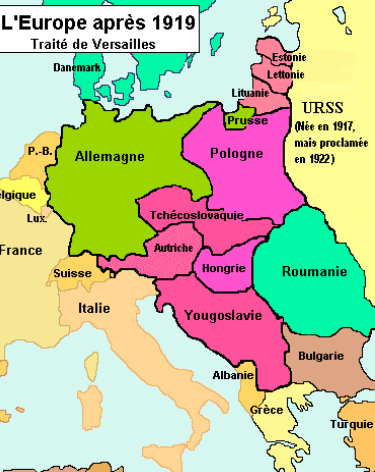 Même s’ils ne signent pas le Traité de Versailles, les Etats-Unis tenteront, dès la moitié des années 20, de mettre l’Europe (et tout particulièrement l’Allemagne) sous tutelle via une politique de crédits. Parallèlement à cette politique financière, les Etats-Unis imposent dans les années 20 des principes wilsoniens de droit international, faussement pacifistes, visant à priver les Etats du droit à faire la guerre, surtout les Etats européens, leurs principaux rivaux, et le Japon, dont ils veulent s’emparer des nouvelles conquêtes dans le Pacifique. On peut évidemment considérer, à première vue mais à première vue seulement, que cette volonté de pacifier le monde est positive, portée par un beau projet philanthropique. L’objectif réel n’est pourtant pas de pacifier le monde, comme on le perçoit parfaitement aujourd’hui au Levant et en Mésopotamie, où les Etats-Unis, via leur golem qu’est Daech, favorisent « l’intensification maximale du désordre ». L’objectif réel est de dépouiller tout Etat, quel qu’il soit, quelle que soient ses traditions ou les idéologies qu’il prône, de sa souveraineté. Aucun Etat, fût-il assiégé et étouffé par ses voisins, fût-il placé par ses antécédents historiques dans une situation d’in-viabilité à long terme à cause d’une précédente mutilation de son territoire national, n’a plus le droit de rectifier des situations dramatiques qui condamnent sa population à la misère, à l’émigration ou au ressac démographique. Or la souveraineté, c’était, remarquait Carl Schmitt face au déploiement de ce wilsonisme pernicieux, la capacité de décider de faire la guerre ou de ne pas la faire, pour se soustraire à des situations injustes ou ingérables. Notamment, faire la guerre pour rompre un encerclement fatidique ou un enclavement qui barrait la route à la mer et au commerce maritime, était considéré comme légitime. Le meilleur exemple, à ce titre, est celui de la Bolivie enclavée au centre du continent sud-américain, suite à une guerre du 19ème siècle, où le Pérou et le Chili lui avaient coupé l’accès au Pacifique : le problème n’est toujours pas résolu malgré l’ONU. De même, l’Autriche, vaincue par Napoléon, est privée de son accès à l’Adriatique par l’instauration des « départements illyriens » ; en 1919, Clémenceau lui applique la même politique : la naissance du royaume de Yougoslavie lui ôte ses bases navales d’Istrie (Pola), enlevant par là le dernier accès des puissances centrales germaniques à la Méditerranée. L’Autriche implose, plonge dans la misère et accepte finalement l’Anschluss en 1938, dont la paternité réelle revient à Clémenceau.
Même s’ils ne signent pas le Traité de Versailles, les Etats-Unis tenteront, dès la moitié des années 20, de mettre l’Europe (et tout particulièrement l’Allemagne) sous tutelle via une politique de crédits. Parallèlement à cette politique financière, les Etats-Unis imposent dans les années 20 des principes wilsoniens de droit international, faussement pacifistes, visant à priver les Etats du droit à faire la guerre, surtout les Etats européens, leurs principaux rivaux, et le Japon, dont ils veulent s’emparer des nouvelles conquêtes dans le Pacifique. On peut évidemment considérer, à première vue mais à première vue seulement, que cette volonté de pacifier le monde est positive, portée par un beau projet philanthropique. L’objectif réel n’est pourtant pas de pacifier le monde, comme on le perçoit parfaitement aujourd’hui au Levant et en Mésopotamie, où les Etats-Unis, via leur golem qu’est Daech, favorisent « l’intensification maximale du désordre ». L’objectif réel est de dépouiller tout Etat, quel qu’il soit, quelle que soient ses traditions ou les idéologies qu’il prône, de sa souveraineté. Aucun Etat, fût-il assiégé et étouffé par ses voisins, fût-il placé par ses antécédents historiques dans une situation d’in-viabilité à long terme à cause d’une précédente mutilation de son territoire national, n’a plus le droit de rectifier des situations dramatiques qui condamnent sa population à la misère, à l’émigration ou au ressac démographique. Or la souveraineté, c’était, remarquait Carl Schmitt face au déploiement de ce wilsonisme pernicieux, la capacité de décider de faire la guerre ou de ne pas la faire, pour se soustraire à des situations injustes ou ingérables. Notamment, faire la guerre pour rompre un encerclement fatidique ou un enclavement qui barrait la route à la mer et au commerce maritime, était considéré comme légitime. Le meilleur exemple, à ce titre, est celui de la Bolivie enclavée au centre du continent sud-américain, suite à une guerre du 19ème siècle, où le Pérou et le Chili lui avaient coupé l’accès au Pacifique : le problème n’est toujours pas résolu malgré l’ONU. De même, l’Autriche, vaincue par Napoléon, est privée de son accès à l’Adriatique par l’instauration des « départements illyriens » ; en 1919, Clémenceau lui applique la même politique : la naissance du royaume de Yougoslavie lui ôte ses bases navales d’Istrie (Pola), enlevant par là le dernier accès des puissances centrales germaniques à la Méditerranée. L’Autriche implose, plonge dans la misère et accepte finalement l’Anschluss en 1938, dont la paternité réelle revient à Clémenceau. 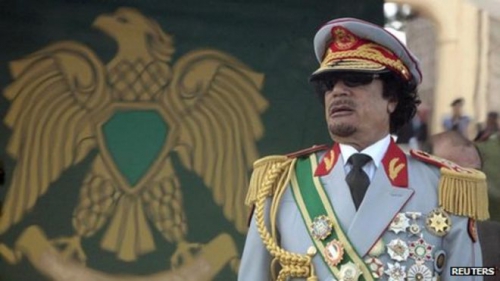


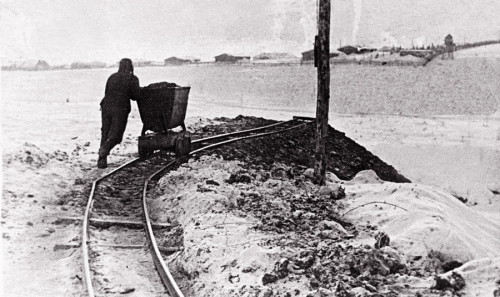


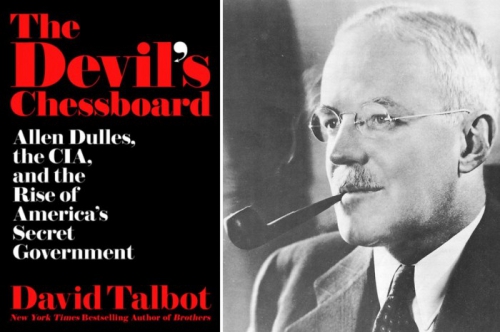
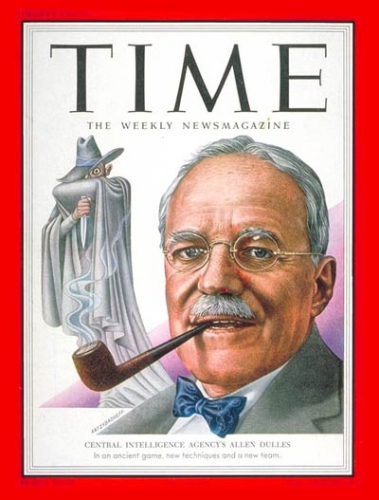 De Marenches and the Safari Club certainly had a clear motive to oust Carter: They blamed him for allowing one of their charter members, the Shah, to fall from power. But whether de Marenches’ claims were true or not, we do know that history unfolded exactly as he and the Safari Club would have wished. The hostages weren’t released until Reagan was inaugurated, Reagan appointed Casey director of the CIA, and from that point forward America’s intelligence “community” was back in business.
De Marenches and the Safari Club certainly had a clear motive to oust Carter: They blamed him for allowing one of their charter members, the Shah, to fall from power. But whether de Marenches’ claims were true or not, we do know that history unfolded exactly as he and the Safari Club would have wished. The hostages weren’t released until Reagan was inaugurated, Reagan appointed Casey director of the CIA, and from that point forward America’s intelligence “community” was back in business.
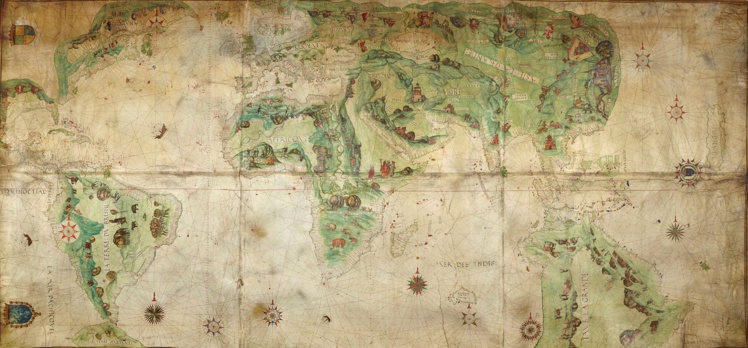
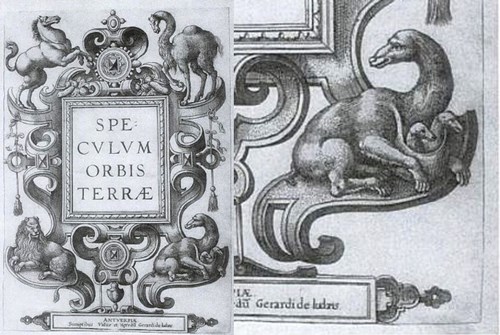
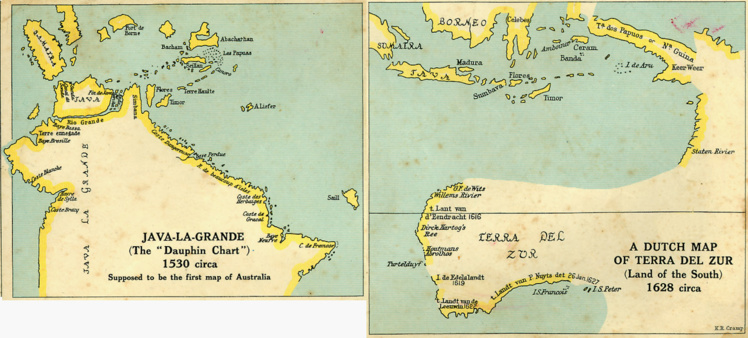


 Così mentre si delinea lo scenario di una Guerra Fredda articolata sulla contrapposizione tra due blocchi, quello statunitense e quello sovietico, i teorici Aflaq e Al Bitar mirano a edificare un’ideologia esclusivamente araba che si smarca sia dal capitalismo imperialista che dal marxismo internazionalista e che allo stesso tempo riesca a conciliare laicità, tradizione islamica, socialismo e nazionalismo. Patrick Seale, giornalista irlandese e biografo di Hafez Al Assad scrive ne Il Leone di Damasco parafrasando la dottrina del partito: “La nazione araba, insegna Aflaq, è millenaria, eterna ed unica, risale all’inizio dei tempi e ha davanti a sé un ancor più luminoso futuro. Per liberarsi dall’arretratezza e dall’oppressione straniera, gli arabi devono avere fede nella loro nazione ed amarla senza riserve”.
Così mentre si delinea lo scenario di una Guerra Fredda articolata sulla contrapposizione tra due blocchi, quello statunitense e quello sovietico, i teorici Aflaq e Al Bitar mirano a edificare un’ideologia esclusivamente araba che si smarca sia dal capitalismo imperialista che dal marxismo internazionalista e che allo stesso tempo riesca a conciliare laicità, tradizione islamica, socialismo e nazionalismo. Patrick Seale, giornalista irlandese e biografo di Hafez Al Assad scrive ne Il Leone di Damasco parafrasando la dottrina del partito: “La nazione araba, insegna Aflaq, è millenaria, eterna ed unica, risale all’inizio dei tempi e ha davanti a sé un ancor più luminoso futuro. Per liberarsi dall’arretratezza e dall’oppressione straniera, gli arabi devono avere fede nella loro nazione ed amarla senza riserve”.